For fish keepers, mastering the essentials of aquarium care is crucial to maintaining a healthy and balanced aquatic environment. After all, happy fish make happy fishkeepers, right? There is a wide range of parameters to monitor. However, the most critical factors to understand are KH (carbonate hardness), GH (general hardness), and PH (potential hydrogen) levels. These parameters play a significant role in the well-being of your aquarium inhabitants and can impact their health and longevity. This article explains aquarium KH, GH, and PH's roles in creating a balanced aquatic environment and practical advice on testing and maintaining these levels for optimal fish health.
KH, GH, and PH: What's the Difference?
KH, GH, and PH all play an essential role in creating the optimum water chemistry for our fish, and therefore we need to monitor them carefully. KH refers to carbonate hardness, which measures the amount of bicarbonate and carbonate ions in the water. Thanks to its buffering capacity, this parameter helps stabilize the pH of your aquarium water, preventing sudden pH swings that can harm your fish.
GH, or general hardness, measures the concentration of calcium carbonate and magnesium ions in the aquarium water. These natural minerals are essential for aquarium inhabitants' overall health and well-being. A stable GH value ensures that your fish receive the minerals they need for proper growth and development.
PH, on the other hand, measures the acidity or alkalinity of the aquarium water. Maintaining a stable pH is crucial for the health of your fish, as sudden pH drops or swings can cause stress and even death in some cases. The ideal pH level varies depending on the species of fish you are keeping, so it is essential to research the specific requirements of your aquarium inhabitants. For soft water fish, high PH can be especially dangerous. Equally, fish from naturally hard or alkaline water may find the wrong conditions fatal.
Understanding Water Hardness: KH and GH
Water hardness refers to the concentration of dissolved minerals, primarily calcium and magnesium, in the water. It is divided into two categories: KH and GH.
-
KH (Carbonate Hardness): KH measures the concentration of carbonate (CO3²⁻) and bicarbonate (HCO3⁻) ions in the water. It acts as a buffering agent, helping to stabilize and maintain the correct pH levels in the aquarium. A stable pH is essential for the health and well-being of aquarium inhabitants.
-
GH (General Hardness): GH measures the total concentration of dissolved calcium (Ca²⁺) and magnesium (Mg²⁺) present in the water. These minerals are vital for various biological processes in fish and invertebrates, such as maintaining bone structure, supporting osmoregulation, and ensuring proper egg formation.
Measuring KH & GH effectively
A very reliable method of testing for both Gh and kH is by using a test kit specifically designed for the job. With a variety of different options, the process of the actual test is generally the same. A test kit will consist of a test tube, syringe and reactor agent. First, add some tank water to the test tube to measure kH or gauge the gH values within the aquarium water. There is usually a line marked on the test tube for this. Then, following the instructions of the gH or kH test kit, add the exact amount of reactor agent to the tank water.
The aquarium water reacts to the agent and turns a different colour. To identify whether the gH or kH level is within the desired range, compare the colour of the water inside the test tube with the colour chart provided with your liquid test kits
Implications of KH and GH on Fish Health and Well-being
Maintaining appropriate KH and GH levels is essential for your aquarium inhabitants' overall health and well-being. Here's how these parameters impact fish:
-
pH Stability: An adequate KH level helps maintain a stable pH in the aquarium, preventing sudden pH swings that can stress fish and lead to health problems or even death.
-
Osmoregulation: Fish need to regulate the balance of water and minerals within their bodies, known as osmoregulation. Proper GH levels ensure that fish can access the necessary minerals, such as calcium and magnesium, to maintain this balance effectively.
-
Species-Specific Requirements: Different fish species thrive in varying KH and GH levels. For example, African cichlids prefer hard water with high KH and GH levels, while Amazonian fish, like tetras and discus, thrive in soft water with lower KH and GH levels. Researching your aquarium inhabitants' specific KH and GH requirements is essential to create an optimal environment.
What is the impact of Low GH and KH Levels in Aquariums?
GH and KH are essential parameters to consider when setting up an aquarium. GH, or General Hardness, measures the concentration of minerals such as calcium and magnesium in the water. KH, or Carbonate Hardness, measures the buffering capacity of the water, which is essential to maintain a stable pH level.
Low levels of both GH and KH can produce an unfavourable environment for aquatic life. Fish and plants need a specific level of these minerals to thrive and remain healthy. When GH and KH levels are too low, aquatic life can be impacted in various ways.
Fish that require higher GH levels, such as cichlids and livebearers, can experience stunted growth, weakened immune systems, and even deformities if GH levels are not maintained properly. Low GH levels can also cause fish to become more susceptible to diseases such as fin rot and the dreaded ich.
Similarly, low KH levels can lead to low pH, harming fish and plants. In aquariums with low KH levels, a low pH level can occur suddenly and cause stress or even death among most freshwater fish. Plant growth can also be affected by low KH environments, resulting in stunted plant growth and yellowing of leaves.
Read on to learn more about maintaining proper GH and KH levels using specific products such as mineral supplements.
Low GH and KH levels can cause various challenges and diseases for your aquatic life. You can ensure a healthy and thriving aquarium ecosystem by monitoring and maintaining proper GH and KH levels as part of your regular aquarium maintenance.
The Effects of High KH and GH Levels on Aquatic Life in Your Aquarium.
Maintaining proper KH (Carbonate Hardness) and GH (General Hardness) levels in your aquarium is crucial for the health and well-being of your aquatic pets. If these levels are too high, they can harm aquatic life in your tank.
High levels of KH and GH can cause various problems for aquatic life in your aquarium. For example, high KH levels can lead to much higher pH levels, which can harm most freshwater fish and plants. High GH levels can cause mineral deposits to form on surfaces in your tank, which can be unsightly and difficult to remove.
In addition to these issues, high levels of KH and GH can also cause stress and illness in most freshwater fish. Some fish species may develop swim bladder problems, while others may experience reproductive issues or weakened immune systems.
Signs of high KH and GH levels can include cloudy or discoloured water, poor plant growth, and abnormal fish behaviour or appearance. Monitoring these levels regularly using a testing kit and taking action if necessary is essential.
Various factors can cause high KH and GH levels in your aquarium. For example, overuse of alkaline buffers or limestone substrates can contribute to high KH levels. Similarly, excessive use of calcium and magnesium supplements can cause high GH levels.
To prevent high KH and GH levels in your aquarium, it's essential to maintain the correct amount of fish and avoid overfeeding. Avoiding the overuse of buffers and supplements is also helpful. Regular water changes can also help dilute high levels of minerals and restore more balanced levels in your tank. In addition to these steps, you can use specific products such as reverse osmosis (RO) water or RO/DI (deionization) systems to remove excess minerals from your tap water before adding it to your aquarium. These products can be beneficial if your water source has consistently high KH and GH levels.
High levels of KH and GH can significantly negatively impact aquatic life in your aquarium. Monitoring these levels regularly and taking appropriate action to prevent high levels creates a healthy and thriving aquatic environment helping your fish stay healthy for longer. Good feeding and stocking practices, avoiding overuse of buffers and supplements, and using products such as RO water or RO/DI systems can help maintain your tank's proper KH and GH levels.
Managing and Adjusting KH and GH Levels
To ensure the health and well-being of your aquarium inhabitants, it's crucial to manage and adjust KH and GH levels accordingly. Here are some tips to help you achieve this:
-
Research Your Inhabitants' Needs: Understand your fish and plants' specific KH and GH requirements. This information will guide you in creating a suitable environment for them to thrive.
-
Test Regularly: Use KH and GH test kits to monitor your aquarium levels regularly. This will help you detect any fluctuations and make adjustments as needed.
-
Adjusting KH and GH: If you need to increase KH and GH levels, use commercial products designed to raise hardness or add natural materials, such as crushed coral, limestone, or aragonite sand. To lower KH and GH levels, reverse osmosis (RO) or distilled water can dilute the minerals in your aquarium.
-
Monitor pH: Since KH affects pH stability, monitoring pH levels alongside KH and GH is essential. Avoid pH swings and maintain a steady pH appropriate for your aquarium inhabitants. Another reason why a little research goes a long way.
By understanding the significant impact of KH and GH on the health of your aquarium inhabitants, you can create a healthy and thriving environment for them. With proper management and adjustments, you can ensure that your fish and plants live in harmony within their aquatic home.
What is pH?
The term “pH” stands for “potential hydrogen” and measures the acidity or alkalinity of a solution. The pH scale ranges from 0 to 14, with seven being neutral. A lower number indicates an acidic solution, while a higher number indicates an alkaline solution. Freshwater aquariums should generally have a pH between 6.5 and 8.0, while saltwater aquariums should have a pH between 8.0 and 8.4. No matter what fish species or aquarium type, you should always avoid pH swings and work towards a balanced ph for your fish.
Types of pH & Their Impact on Aquatic Life
The type of water you use in your aquarium will determine the type of pH you need to maintain for optimal aquatic life health. Freshwater fish prefer slightly acidic water (6-7), while saltwater fish prefer higher PH water (8-8.4). Different types of aquatic life require different types of water with different levels of acidity or alkalinity; it is vital to research the specific needs of each species before adding them to your tank.
Methods for Controlling & Monitoring pH Levels
There are several methods for controlling and monitoring the pH levels in your aquarium.
-
Chemical buffers - Can be added directly into the tank to raise or lower the acidity or alkalinity; however, they can be difficult to control accurately without proper testing equipment such as test kits or meters.
-
Biological buffers - Rely on beneficial bacteria present in the tank to help regulate the acidity or alkalinity; these bacteria can be introduced through live rock or substrate material when setting up a new tank, but it may take some time before they become established enough to regulate the environment within the tank itself effectively.
-
Natural buffers - Adding natural materials such as driftwood, peat moss, or crushed coral into the filter system, which will slowly release tannins over time that will help stabilize both acidity and alkalinity levels within the tank environment over time without needing any additional maintenance from you as an aquarist beyond regular filter changes every few months depending on how heavily stocked your tank is with fish, invertebrates and plants.
-
Testing kits - Testing kits, dip tests or strips and digital monitoring systems are all available options that allow you to quickly test for acidity/alkalinity levels and other important parameters such as nitrate/nitrite levels. Test kits help to avoid pH swings and ensure everything remains within optimal ranges at all times without having to guess based on visual cues alone, which can often lead to potentially fatal pH swings. Relying upon visual cues alone to manage water parameters can fool even the most experienced fishkeepers.
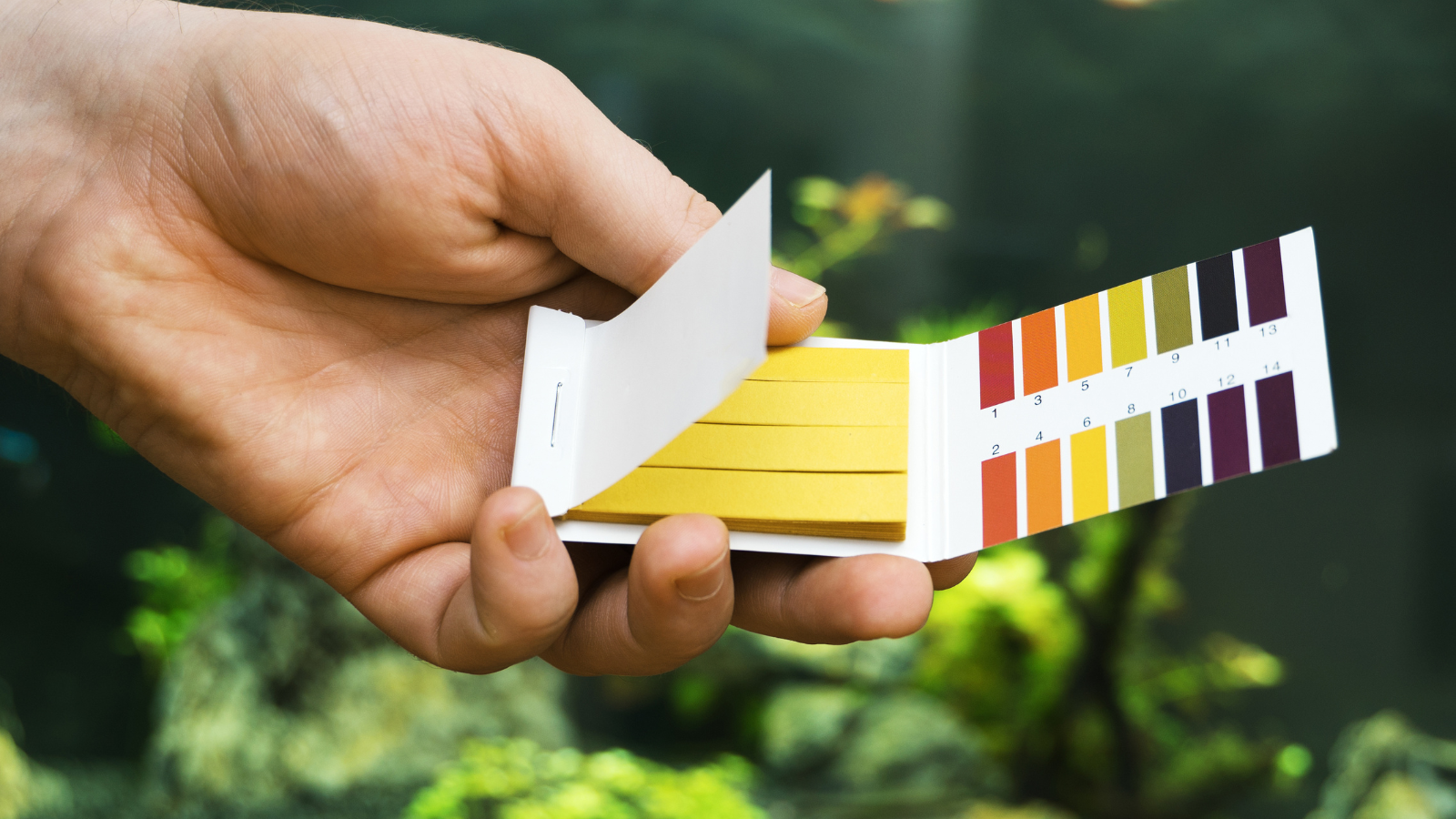
Why is stable pH important, and how to avoid Ph Swings
Maintaining a healthy pH level is one of the most important aspects of a healthy aquatic environment for your fish and other aquatic creatures. The correct pH levels will promote healthy biological functions and impact your pets' health and well-being. A healthy pH level also improves aquatic plants' growth just as much as fish.
In freshwater aquariums, pH levels ensure aquatic animals' optimal growth rate, survival, and reproduction. Unfortunately, research has shown that even minor fluctuations in pH can cause stress and harm to the aquatic creatures in your tank. PH fluctuations often cause significant harm to aquatic pets, leading to stunted growth, disease, or even death.
Many factors can cause pH swings in freshwater aquariums, including overfeeding, overstocking and waste accumulation. In addition, the pH level of your aquarium water can be influenced by the type of substrate you use. Even your geographical location can affect your aquarium's pH level. Tap water can be soft or hard, depending on where you are.
To avoid pH crashes and maintain the correct pH level, there are several key steps that aquarium owners can take. Buffers and other ph-stabilizing products are an effective way to maintain a stable pH level. These products help maintain a healthy pH level by neutralizing any acidic compounds in the water.
Another way to prevent a pH crash is by monitoring the pH levels in your aquarium regularly. This can be done using a pH testing kit or other monitoring tools. By monitoring your aquarium's pH level, you can detect any fluctuations quickly and take action to maintain stable levels and prevent any pH crash from happening.
In addition to these solutions, it's also essential to maintain proper feeding and stocking practices. For example, overfeeding can lead to excess organic waste in your aquarium, lowering the pH level. Similarly, overcrowding can contribute to fish waste, debris buildup, and a higher ph level.
Maintaining a steady pH value is crucial for the health and well-being of your aquatic pets. By monitoring your aquarium's pH level regularly, using buffers and other stabilizing products and maintaining proper feeding and stocking practices, you can prevent pH crashes and keep your aquatic environment healthy and thriving.
The highs and lows of Aquarium Ph.
Several factors can influence the pH levels in an aquarium. These include the type of substrate used, the presence of plants, the filter used, and the frequency and amount of water changes. It's essential to monitor these factors regularly as any changes can cause a shift in pH levels.
Effects of High pH Levels
An increase in pH levels tend to have several adverse effects on the ecosystem. One of the most common signs is the presence of brown algae. This is caused by excess carbonate ions in the water, which can increase pH. Another effect of higher pH levels is a decrease in the availability of nutrients for fish and plants, which can lead to stunted growth and even death.
High pH levels can also lead to an increase in ammonia levels in the water. High pH levels can make it difficult for beneficial bacteria to break down ammonia, which can be toxic to fish and other organisms in freshwater tanks. In addition to these symptoms, high pH levels can cause fish to become stressed and more susceptible to diseases.
Effects of Lower pH Levels
Like high pH levels, lower pH levels can also harm freshwater aquariums. One of the most common symptoms of lower pH levels is the presence of blue-green algae. This algae thrives in acidic environments and can quickly take over an aquarium, leading to a lack of oxygen and even fish death.
Lower pH levels can also lead to poor water quality and stunted growth and disease in fish and other organisms. Due to stress, fish kept in an aquarium with lower pH levels may become more aggressive and territorial.
Maintaining proper pH levels in an aquarium is crucial to keeping the underwater ecosystem healthy and ensuring the fish's and other organisms' well-being. Aquarium keepers should monitor pH levels regularly and be on the lookout for any symptoms that could indicate a shift in pH levels. Aquarium keepers can enjoy a thriving and beautiful underwater ecosystem by taking the necessary steps to maintain healthy pH levels.
To maintain healthy pH levels in an aquarium, monitoring the water quality is essential. This includes testing for pH levels, ammonia, nitrates, and nitrites. Regular water changes can also help keep pH levels in check and remove any excess nutrients contributing to high pH levels.
Several steps can be taken if the pH level goes beyond the normal range. For high pH levels, adding driftwood or leaf litter, such as Catappa leaves to the aquarium can help lower pH levels. Adding carbon dioxide to the water can also help lower high pH levels. This can be done by injecting high-pressure cO2 gas or dosing your aquarium with liquid carbon.
For low pH levels, adding bicarbonate ions (baking soda) or crushed coral in a specialist substrate or sand or within a filter bag inside the aquarium filter chamber can help raise pH levels. It's essential to make these changes gradually to prevent sudden pH shifts, which can harm the ecosystem.
Examples of soft water fish.
Regarding tropical aquariums, the softwater fish group boasts some of the most popular species in the hobby. These fish hail from South America and thrive in acidic water environments with a pH of 6.0 or less.
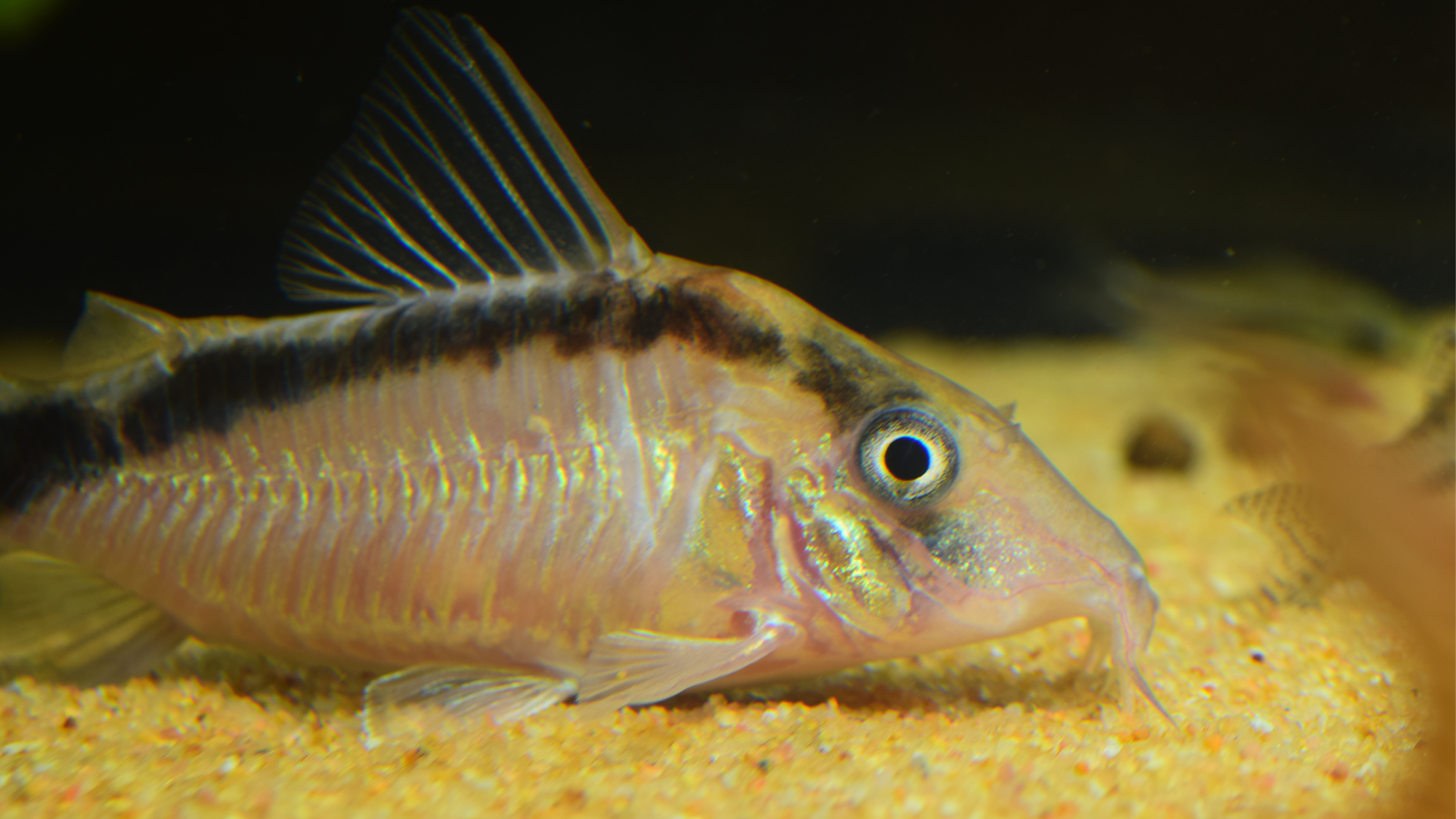
One favourite is Corydoras Catfish, which have various colour variations and sizes. They range between 2.5 and 7.5cm, making them an ideal choice for smaller tanks. These bottom-dwellers enjoy scavenging around the substrate for food and snuggling up against rocks or plants for shelter. Corydoras are very social fish and should always be kept in groups of at least 5+.
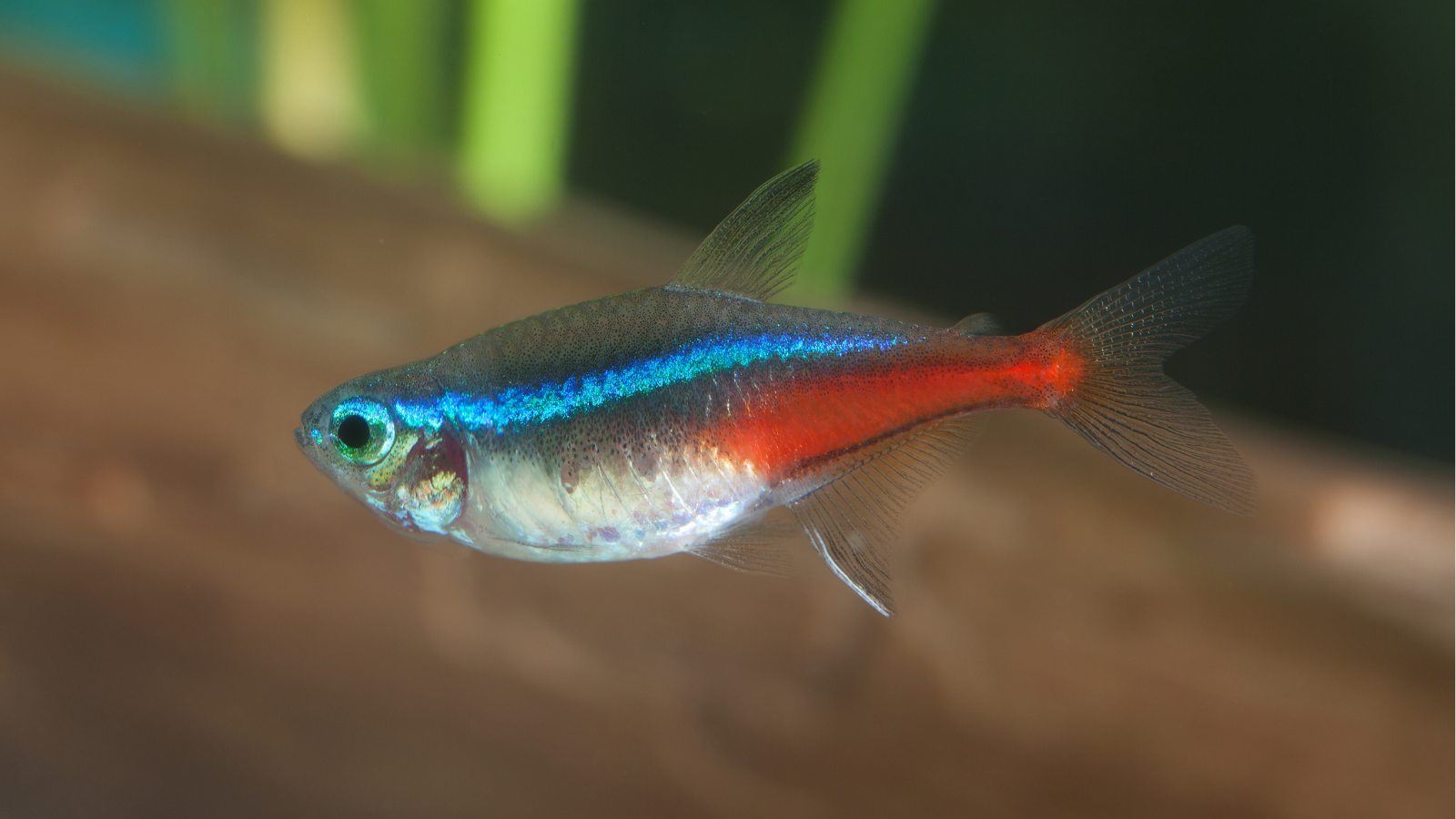
Another softer water fish is the Neon Tetra, famous for its striking colours and peaceful behaviour. These small fish add visual interest to any tank with their vibrant neon stripes and shimmering scales. They generally require a temperature of around 23C-28C and should be kept with other small, non-aggressive species. These fish are especially suited to blackwater aquariums. The dark water enhances their colour impact.
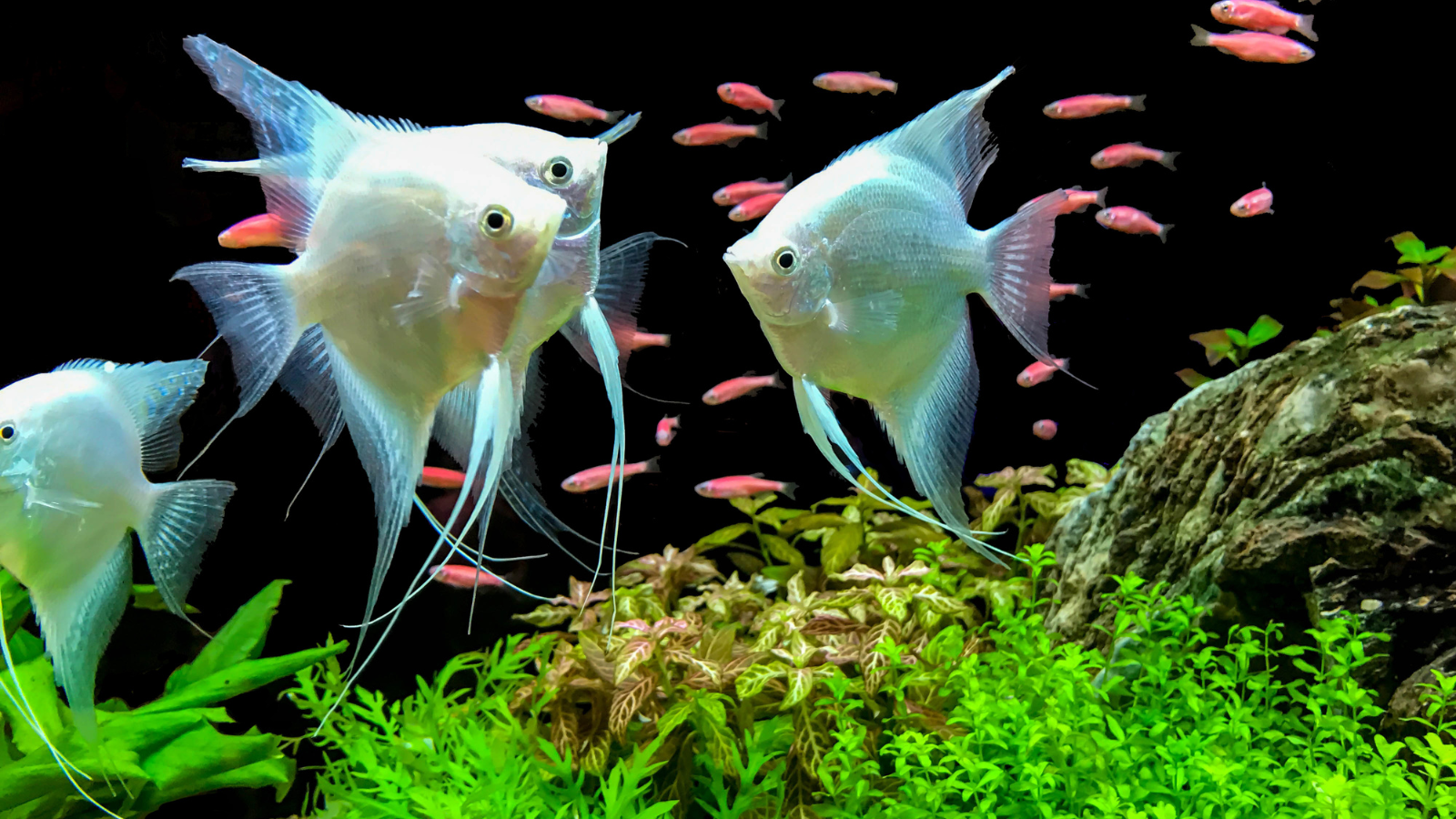
Any aquarium keeper would agree that the Angelfish is the most recognizable tropical fish due to its grand appearance. These South American natives are known for their long fins and vibrant colour patterns. They prefer tanks with plenty of plants and decorations for hiding while they search for food, making them the perfect match for those looking to add a splash of drama to their tank's landscape.
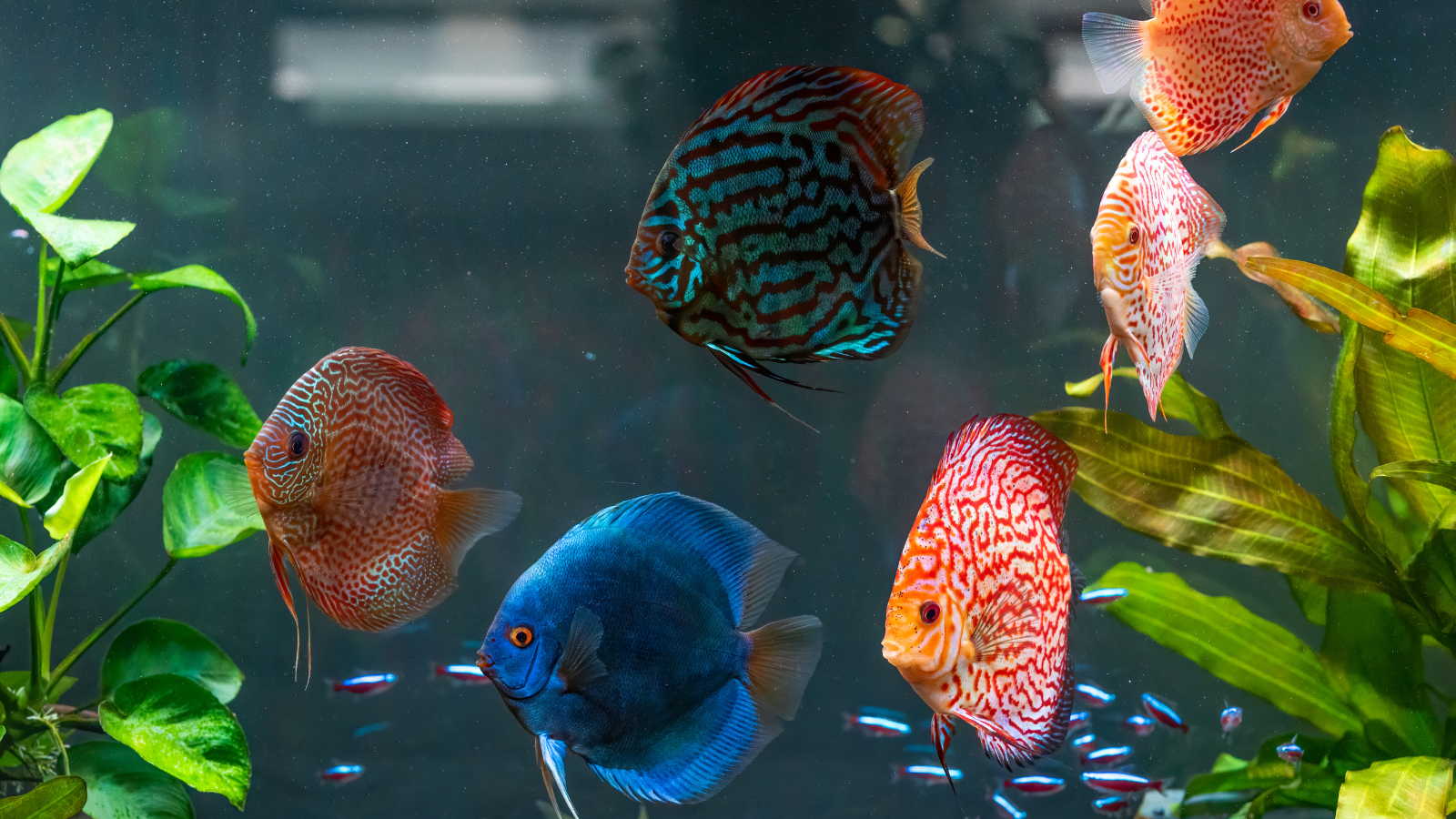
Discus Fish are considered the aquarium world's king (or queen). These majestic creatures are native to South America and thrive in acidic water environments with a pH of 6.0 or less. Discus Fish can be seen in various vivid colours, including blue, red, yellow, and green. They require regular feedings and should be kept in tanks with plenty of rocks for hiding places.
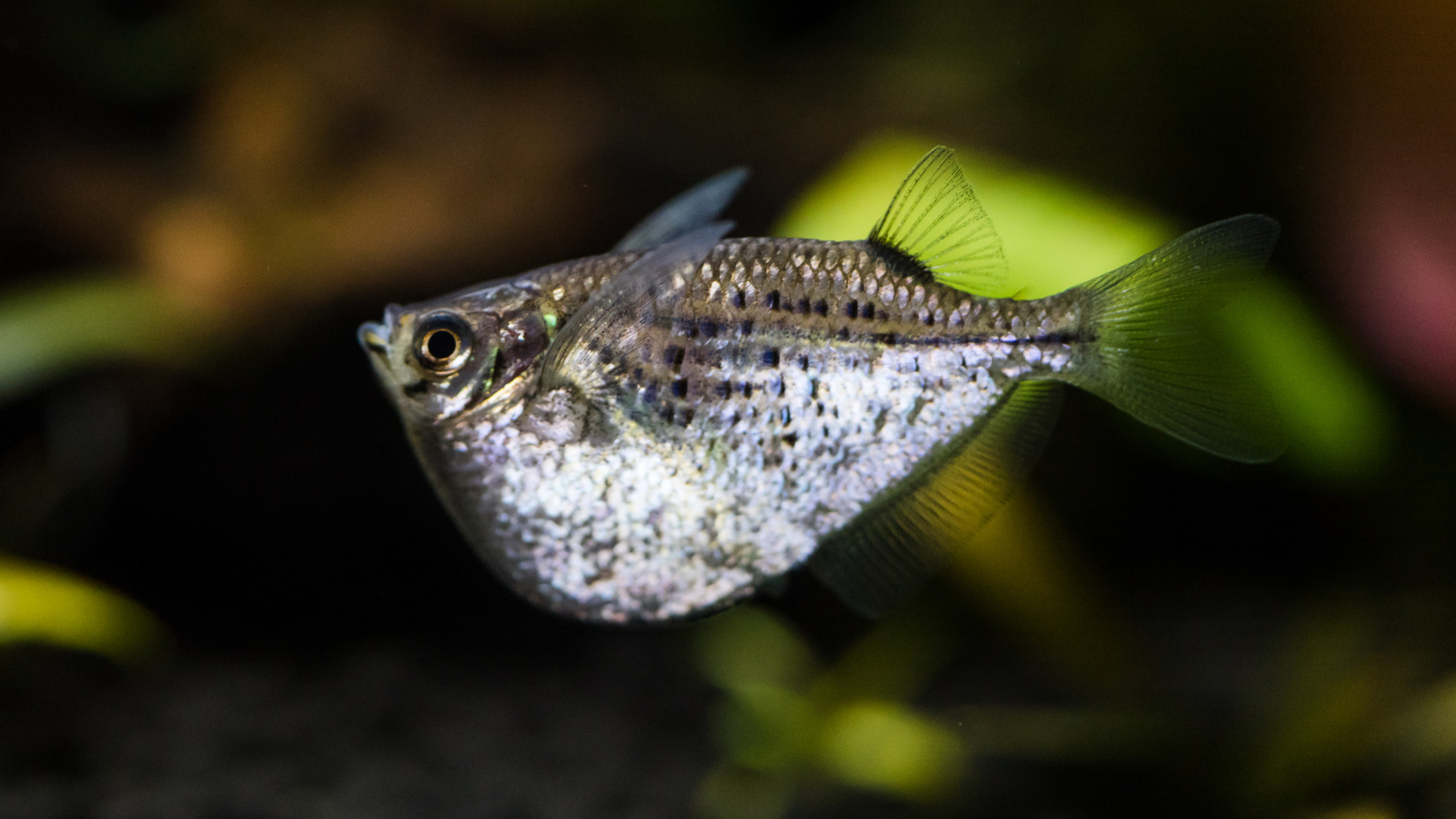
Finally, the Characin family is an excellent choice for those looking to add some small yet eye-catching fish to their aquarium. This family includes Tetras, Hatchetfish, Pencilfish, and more. These fish are relatively small, but many come in bright colours like blues and greens that stand out from the rest of your aquarium's inhabitants. They enjoy being kept in groups, so adding several smaller species can significantly impact your tank's overall look and feel.
Fancy something harder?
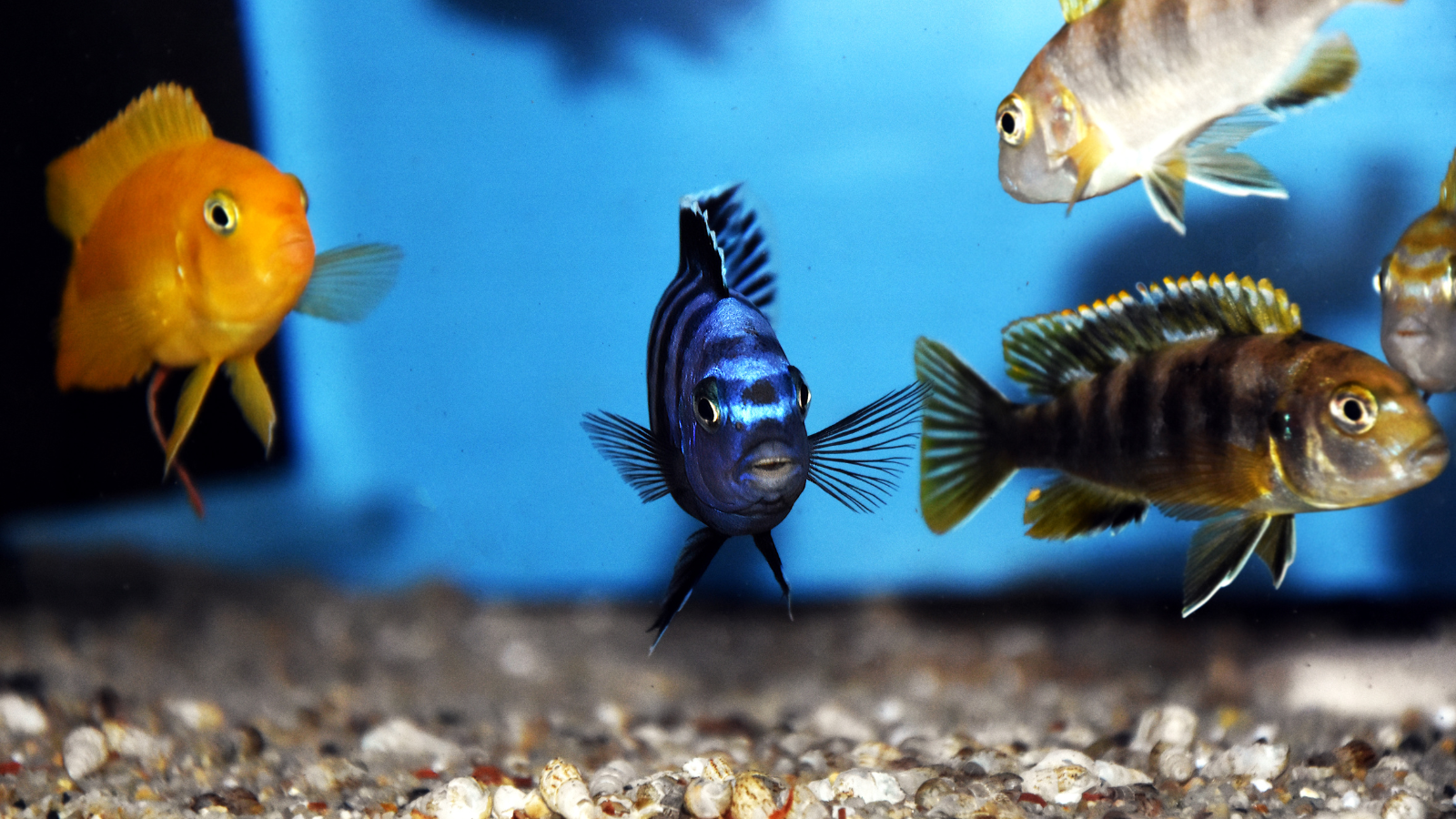
African cichlids are some of the most popular hard water tropical fish species. They are often brightly coloured, making them a great addition to any freshwater aquarium. African cichlids come from Lake Malawi, Lake Tanganyika and Lake Victoria in Africa. These fish can survive in temperatures that range from 25-26C and prefer water with a pH between 8.0 - 8.5. African cichlids usually live for ten years or more when properly cared for and need plenty of rocks to hide in. Many different types of African cichlids are available, so it’s important to research which species will work best together before adding any new additions to an existing tank.
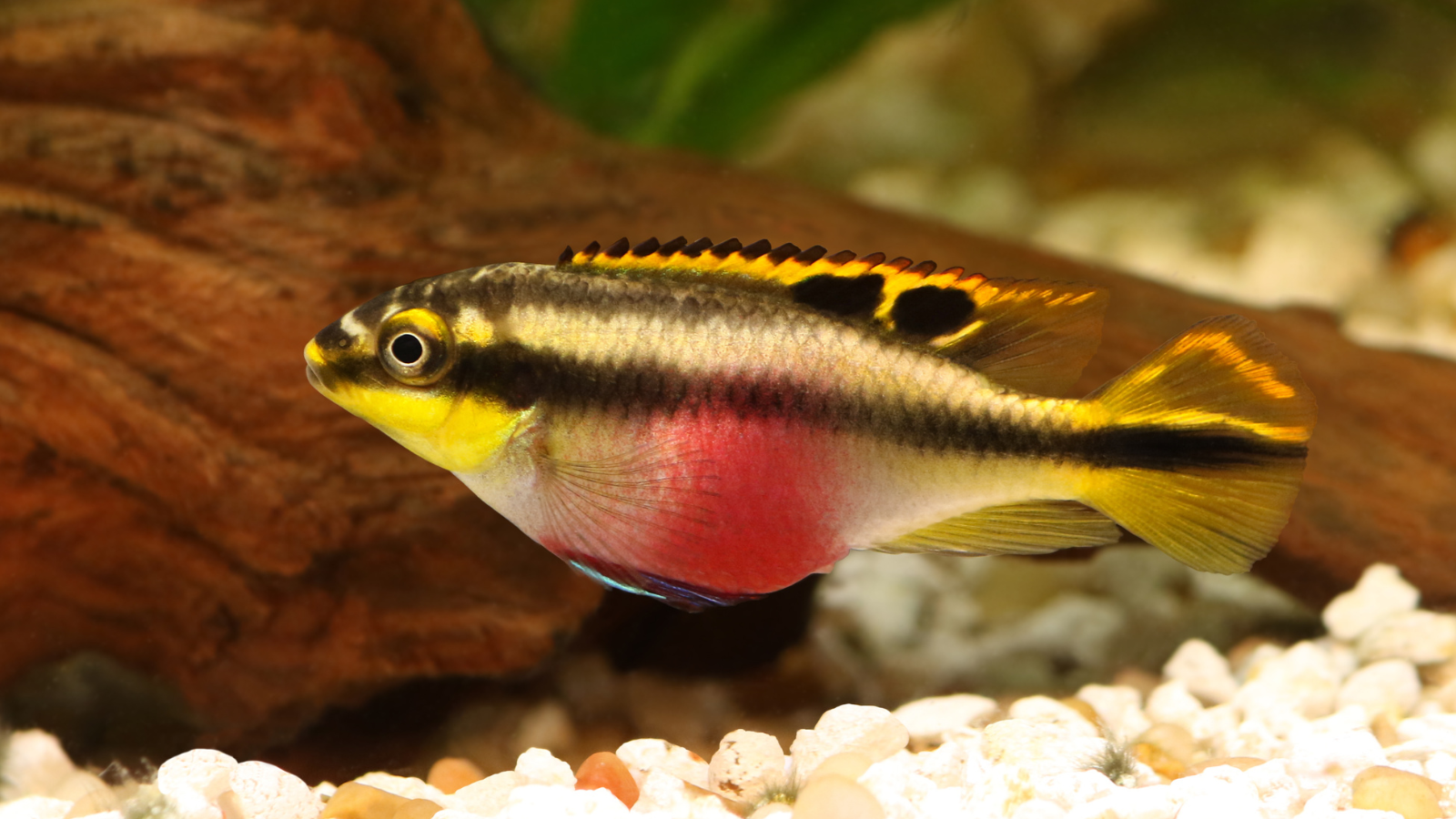
Another hard water tropical fish species (and one of my favourites) is the Kribensis. These small yet brightly coloured cichlids do well in tanks with a pH between 7.5 - 8.2 and temperatures around 25-27°C. They enjoy having plenty of rocks to hide in and other decorations, such as plants and driftwood. Kribensis, one of many African cichlids, are suitable for community setups and can be kept in pairs. They can live for up to 10 years when taken care of properly.
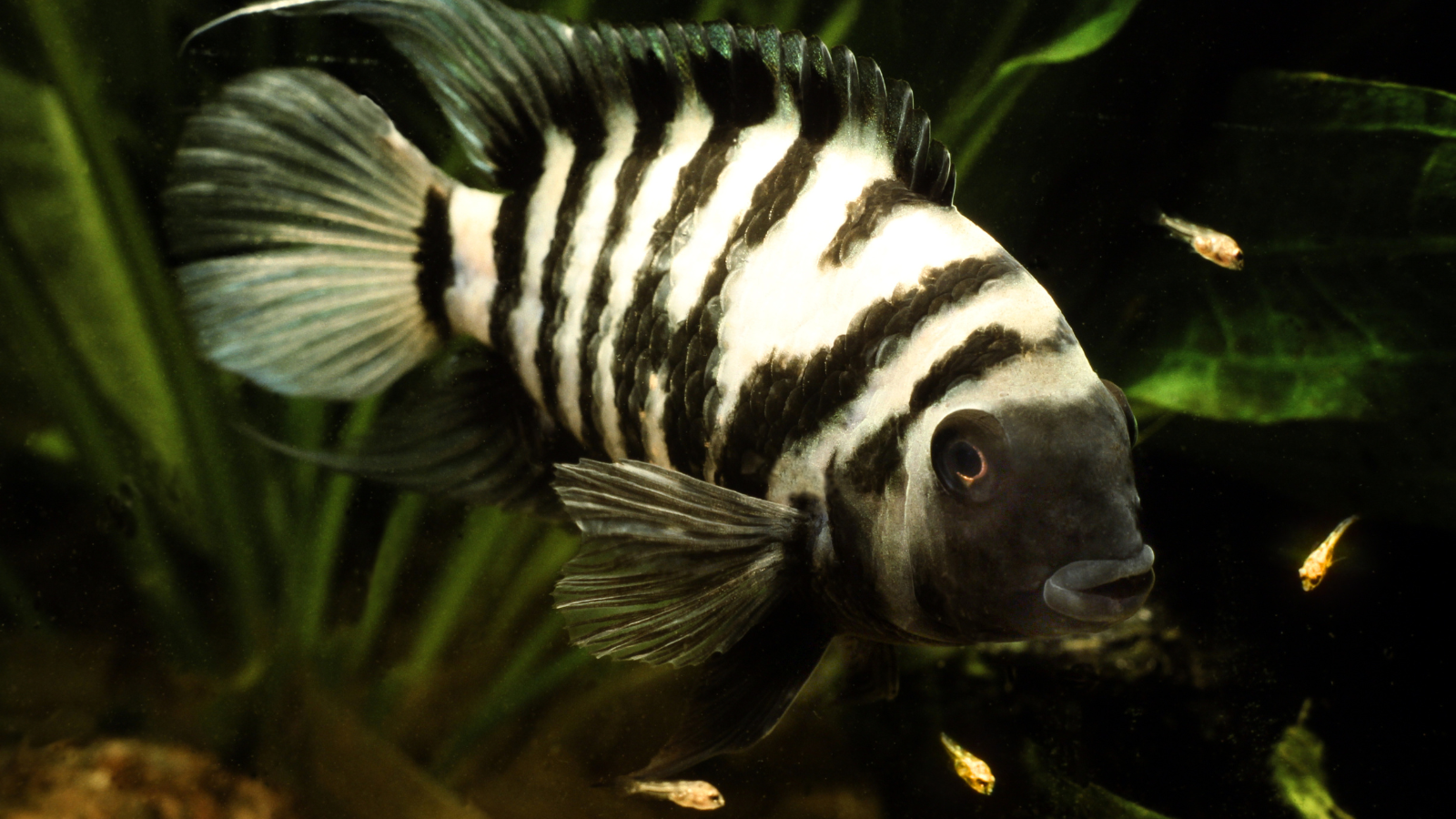
Finally, the Convicts Cichlid is an especially popular hard water tropical fish species. Also known as Zebra Cichlid due to its black and white stripes, this species prefers alkaline waters with a pH between 6 – 8 and moderate temperatures around 24-26C. With a lifespan of up to 8 years, these fish are peaceful and can be kept in groups of two or more. They enjoy having plenty of caves and hiding spots for shelter and live plants to provide shade. Convicts require daily feedings of protein-rich foods like brine shrimp, bloodworms, and other small invertebrates.
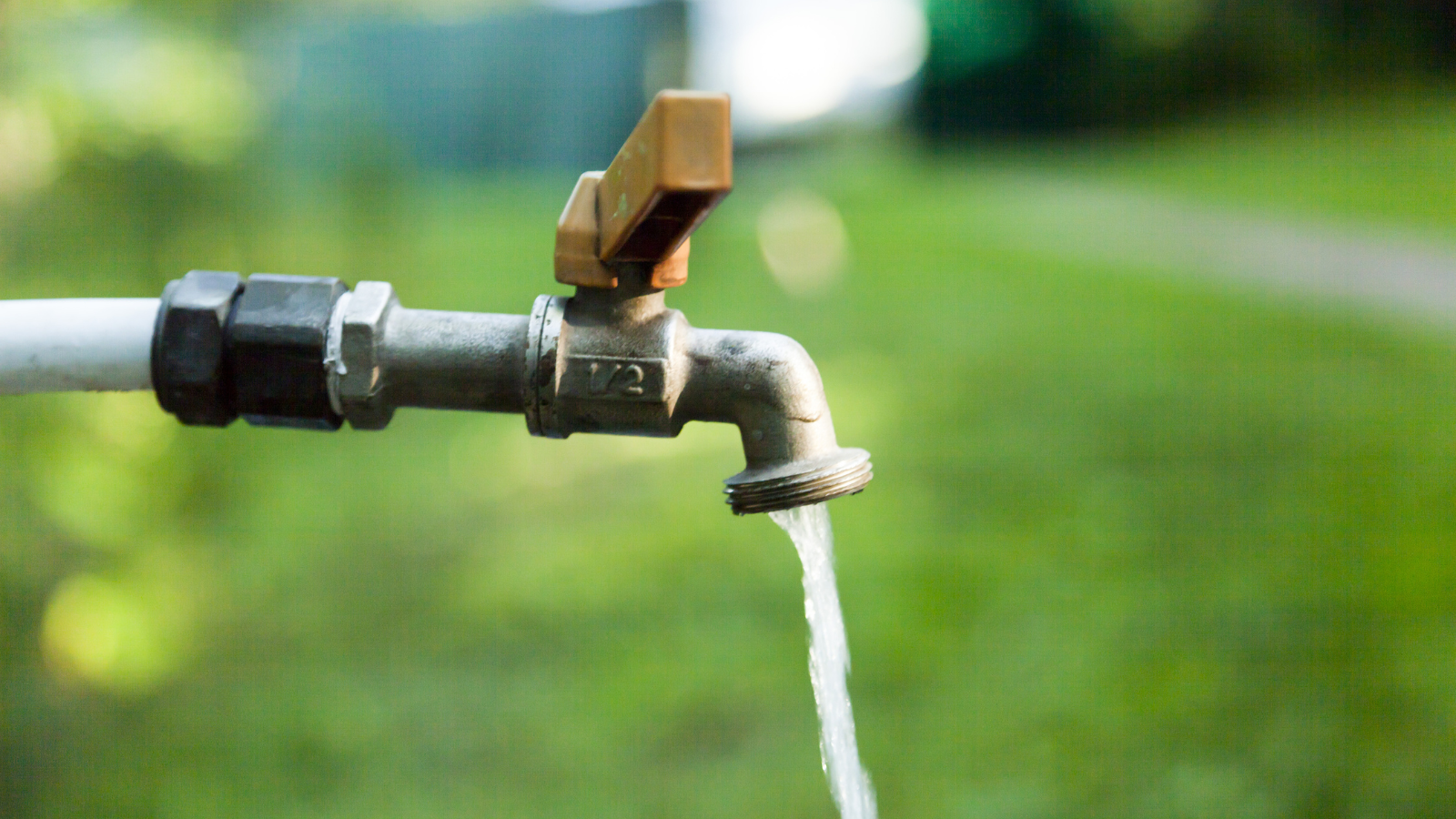
What about tap water chemistry?
Tap water is a readily available water source for aquariums, but it's essential to understand how tap water can impact your freshwater fish and how to condition it before adding it to your aquarium.
The pH, GH, and KH levels of tap water can vary depending on several factors, such as the source of tap water and any treatments that are added to it. Monitoring and adjusting these parameters to maintain a healthy and stable aquatic environment is crucial.
Conditioning your water before adding it to your freshwater aquarium is crucial to ensure that your aquatic pets' pH, GH, and KH levels are within the optimal range. One way to condition tap water is by using a de-chlorinator, which helps remove chlorine and chloramine from tap water. These chemical compounds can harm your aquatic pets, and it's crucial to eliminate them from tap water before adding them to your aquarium.
Several water conditioning products on the market can help adjust pH, GH, and KH levels in tap water. For example, Seachem's Alkaline buffer can adjust pH levels, while their Replenish product can increase GH levels.
Using tap water in aquariums can be convenient, but it's crucial to understand how tap water can impact pH, GH, and KH levels. Regular monitoring and adjusting of these parameters can ensure a healthy and stable aquatic environment for your pets. Additionally, conditioning tap water is essential to protect your aquatic pets from harmful chemicals and maintain the optimal environment for their growth and health.
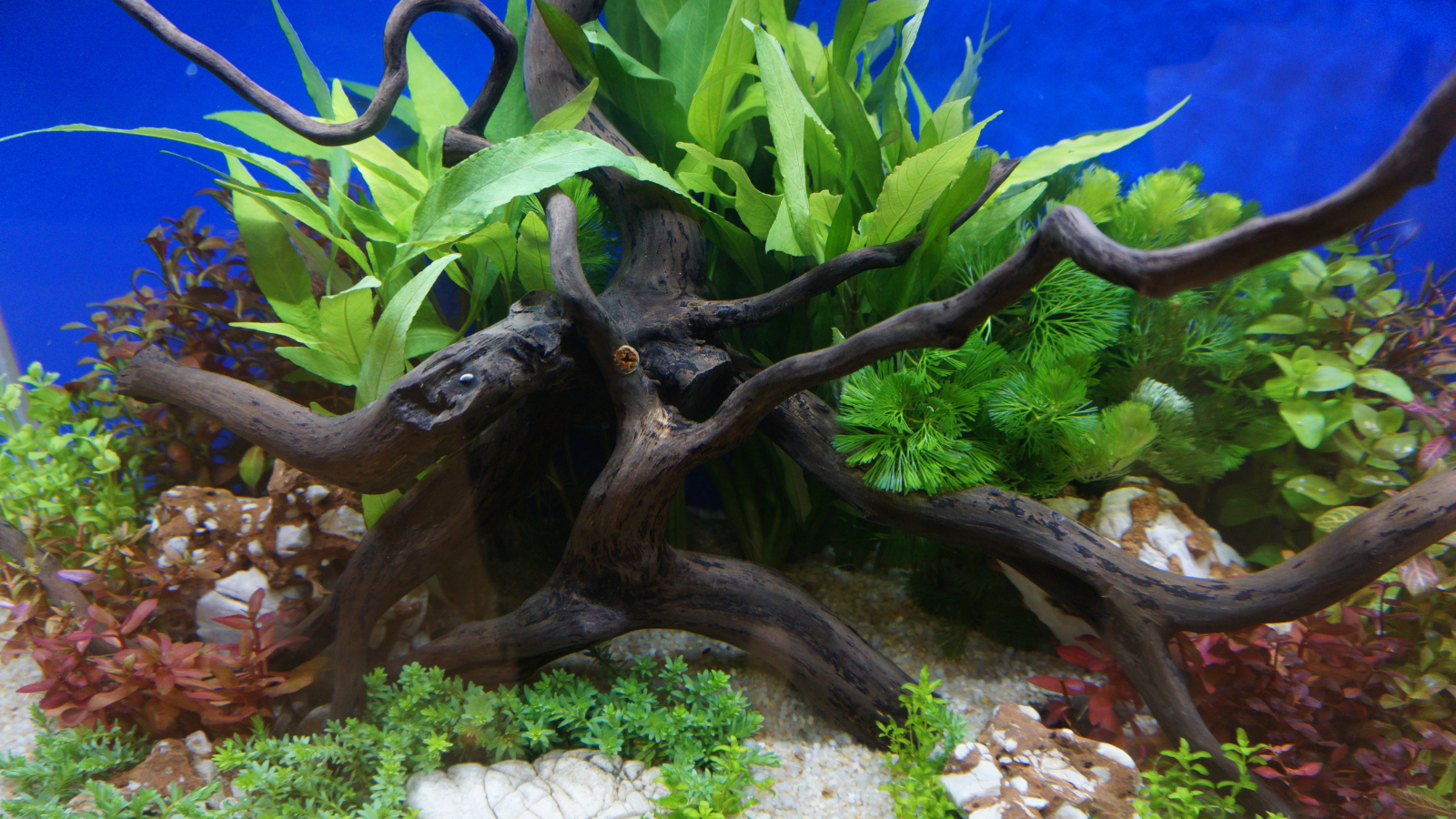
Buffering - as nature intended.
Aquarium enthusiasts know that creating the perfect environment for fish and other aquatic life requires more than just a beautiful tank and decorations. One crucial aspect often overlooked is the buffering capacity of the materials used in the aquarium, particularly when it comes to decorative wood.
The buffering capacity of aquarium wood plays a vital role in maintaining ideal water chemistry for aquatic life. Buffering capacity refers to the ability of a substance to resist changes in pH levels. A higher buffering capacity helps stabilize the pH, ensuring a healthy environment for your aquarium inhabitants.
Different types of aquarium wood possess varying levels of buffering capacity. Some common types of aquarium wood with excellent buffering capacity include:
-
Driftwood: A popular choice for aquariums due to its natural appearance and high buffering capacity. It releases tannins into the water, which can help lower the pH levels, making it ideal for species that prefer slightly acidic water conditions.
-
Mopani Wood: Another type of wood with a high buffering capacity. It is dense, heavy, and resistant to decay, making it a long-lasting addition to an aquarium. Like driftwood, it releases tannins into the water, helping to maintain a stable pH level.
-
Bogwood: A type of wood submerged in water for an extended period. Its high buffering capacity comes from absorbing minerals over time, which it slowly releases back into the aquarium water.
Several factors can affect the aquarium wood's capacity to buffer, including the type of wood, its age, and the size of the piece used in the aquarium. To test the capacity of your aquarium's wood, you can use a pH test kit before and after adding the wood to your tank. This will show you how much the wood affects the pH levels.
When selecting the correct type of wood for maintaining ideal aquarium conditions, consider the following expert recommendations and tips:
-
Research the pH requirements of your aquarium inhabitants: Different species have different pH preferences, so choosing a type of wood with a buffering capacity that matches their needs is essential.
-
Choose wood from a reputable source: Ensure that the wood you select is safe for aquarium use and free of chemicals or contaminants that could harm your aquatic life.
-
Prepare the wood properly: Before adding it to your aquarium, clean it thoroughly and soak it in water for several days to release excess tannins. This will help prevent significant fluctuations in pH levels when the wood is introduced to the tank.
Understanding the buffering capacity of aquarium wood is crucial for maintaining a healthy aquatic environment. By selecting the appropriate type of wood and preparing it correctly, you can create a beautiful and stable home for your fish and other aquatic life. Remember to test the buffering capacity of your chosen wood and monitor your aquarium's pH levels regularly to ensure the well-being of your underwater friends.
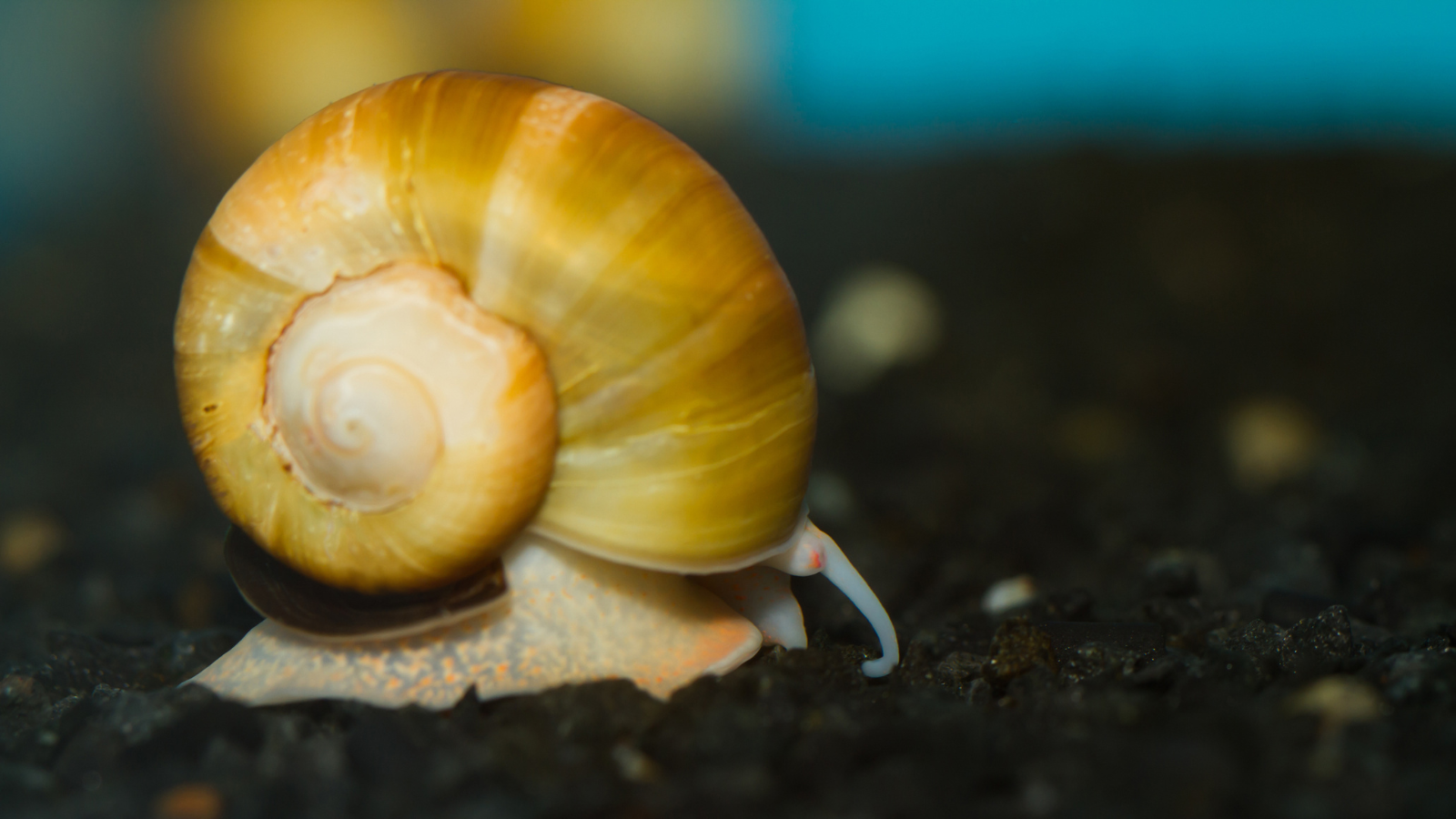
Snail Shell Development.
Snails are fascinating creatures that have captured the interest of many aquarium hobbyists, and one of the most intriguing aspects of their biology is snail shell development. In this article, we will delve into how snails grow their shells, the structure of these shells, and how different water parameters can impact their growth and development.
Snail shell development begins when a snail is just an embryo, with the shell growing as the snail grows. The shell is mainly made from calcium carbonate, secreted by the snail's mantle. As the snail matures, the shell grows in a spiral pattern, adding new layers to accommodate the snail's increasing size. The health and structure of a snail's shell are vital for its overall well-being, as it protects from predators and environmental hazards.
Water parameters, including pH, temperature, dissolved minerals, and hardness, can significantly influence snail shell development.
The pH level of the water can affect the availability of calcium ions, which are essential for snail shell development. A pH level that is too low (acidic) can cause the shell to dissolve, while a pH that is too high (alkaline) can lead to the formation of insoluble calcium compounds, making it difficult for the snail to utilize calcium for shell growth.
Temperature: The water temperature can also impact snail shell formation. Higher temperatures can increase the shell growth rate, but they can also cause the shell to become thinner and more fragile, leaving the snail vulnerable to injury.
Dissolved Minerals: Dissolved minerals, particularly calcium and magnesium, play a crucial role in snail shell health. Adequate levels of these minerals are necessary to form a strong and healthy shell.
Water Hardness: Water hardness, determined by the concentration of dissolved minerals in the water, can also affect snail shell growth. Soft water (low mineral content) can lead to thin and weak shells, while hard water (high mineral content) is more conducive to developing robust and well-developed shells.
Ideal Conditions and Maintaining Proper Water Parameters
Maintaining ideal water conditions is essential to promote healthy snail shells. A pH level between 7.0 and 7.5, a temperature range of 68-82°F (20-28°C), and a water hardness of around 100-200 ppm is generally suitable for most freshwater snails.
To maintain these conditions, it's crucial to regularly monitor your aquarium's water parameters using reliable test kits or products designed for this purpose. If any imbalances are detected, appropriate measures should be taken to correct them, such as adjusting the pH or adding calcium supplements to the water.
Understanding the impact of water parameters on the development of snail shells is essential for maintaining the health and well-being of these fascinating creatures. By carefully monitoring and maintaining proper water conditions, aquarium hobbyists can help ensure the growth of strong, healthy shells that will protect their snails throughout their lives.
Advice for new hobbyists.
As a new fishkeeper, it can be easy to become overwhelmed with all this information. Modern water test kits can resemble small laboratories. Our advice is to start small by researching what type of aquatic life you'd like to keep first, then research their specific requirements regarding temperature range, water hardness (GH), carbonate hardness (KH), ideal PH range etc. Once you know what type(s) of aquatic life you'd like to keep, achieving the ideal parameters is much easier. More importantly, knowing which parameters need monitoring at all times so everything stays within optimal ranges. This makes things much simpler since now, instead of having too many variables floating around, it's just a matter of keeping track of those few parameters mentioned above at all times using buffers and test kits to keep everything stable.
While there are several options available - test kits/strips are usually good enough for most hobbyists if accuracy is vital, then investing in a quality digital meter is recommended since these provide more accurate readings than strips do due, mainly because they measure more than just one parameter at once whereas strips only measure one parameter per strip used meaning multiple strips would need purchasing if wanting accurate readings across multiple parameters which could become costly over time compared with just purchasing one digital meter upfront instead - this way only one device needs calibrating every few months instead multiple strips needing replacing every few weeks depending on usage frequency which could end up costing more money overall if not careful when budgeting accordingly!
It is also important to monitor other factors such as water hardness (GH) & carbonate hardness (KH) when maintaining optimal PH levels since these two parameters also play an essential role when it comes to maintaining stable tank water - GH & KH both act like "buffers" against sudden changes in PH so it's essential monitor not only our tanks' PH but also GH & KH too since these two parameters work hand-in-hand together when trying to achieve stable environments inside our tanks!
With proper research beforehand and regular monitoring afterwards, anyone can easily maintain optimal PH levels inside their tanks regardless of whether they're beginners or seasoned veterans! All it takes is patience & dedication combined with knowledge gained through research beforehand, followed by regular maintenance afterwards. Following this simple formula, anyone can easily maintain healthy environments inside their tanks regardless of whether they're beginners or seasoned aquarists!
Adding beneficial bacteria to your fish tank can help maintain healthy water parameters, and it is highly recommended. Beneficial bacteria can help break down organic waste in your tank water, reducing the risk of ammonia spikes that can harm your fish. Filters are crucial in maintaining healthy tank water parameters by removing debris and harmful bacteria from your aquarium. Ultimately, beneficial bacteria are vital in creating a balanced and healthy environment in your fish tank.
Healthy water parameters are essential to the health and well-being of your fish. Regularly testing and adjusting KH, GH, and pH levels can give your fish a healthy environment. Remember to make any adjustments gradually and add beneficial bacteria to your aquarium. With these tips, you are on your way to becoming a successful fish keeper!
Baking soda is a versatile household item that can also be used as a supplement in aquariums to maintain a healthy and clean environment for all aquatic pets. Read our helpful article about how to add baking soda to your aquarium safely, the proper amount to use, and the benefits it offers to your fish and other aquatic life.
Summary
Maintaining proper KG, GH, and PH levels in an aquarium is essential for the health and well-being of its inhabitants. Fish and plants can suffer from various illnesses or even death if these parameters are not within their optimal range. As a fish keeper, it is essential to research the needs of your fish or plants and take preventive measures to ensure that they live in an environment that meets their requirements. This includes regularly testing the water chemistry, using additives when necessary, and performing regular water changes.
You can help ensure that your wet pets live healthy lives by taking accountability for your actions as an aquarium keeper. With the proper knowledge and care, you can create a safe and suitable environment for your fish or plants. So don’t forget to research and take the necessary steps to maintain your aquarium's proper KG, GH, and PH levels!

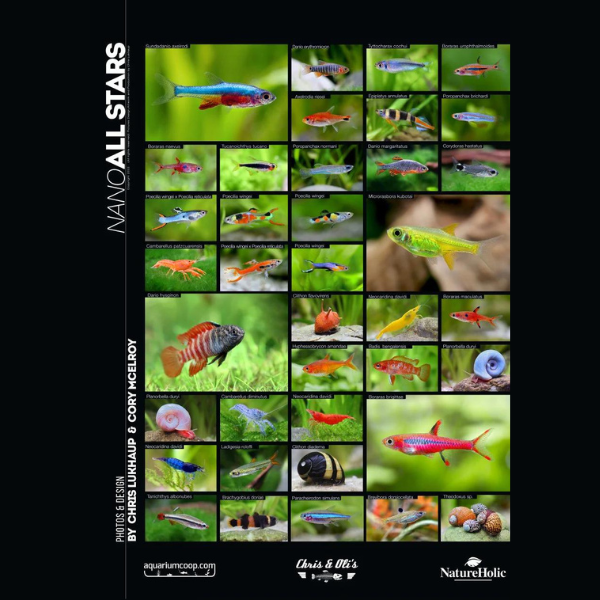
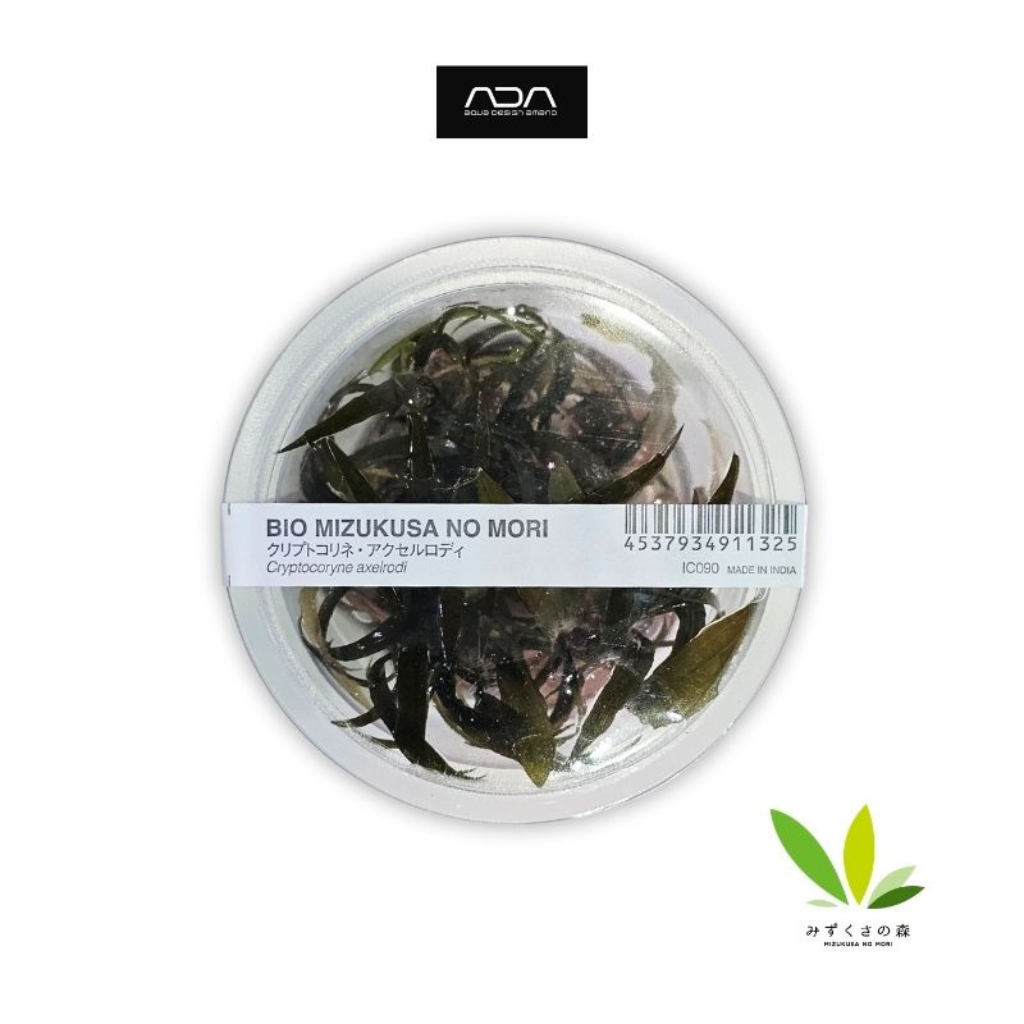
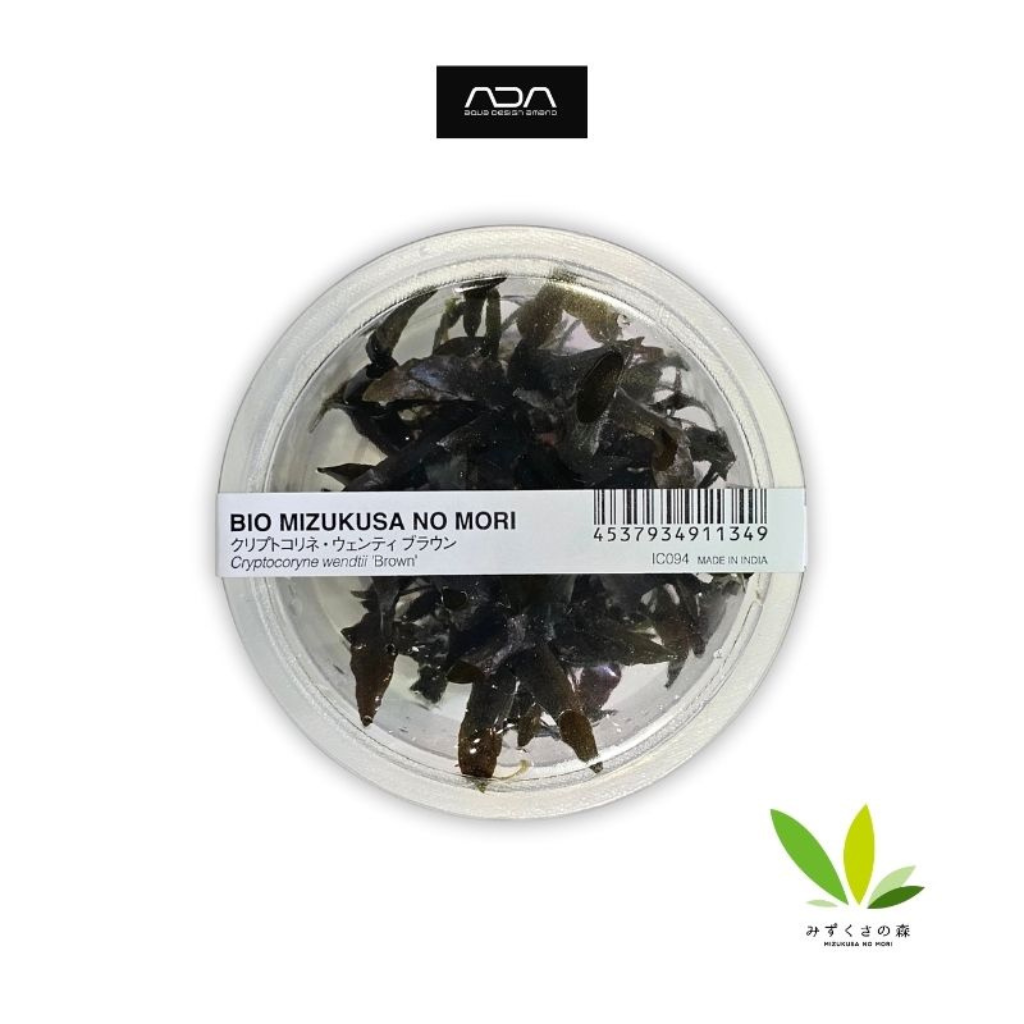
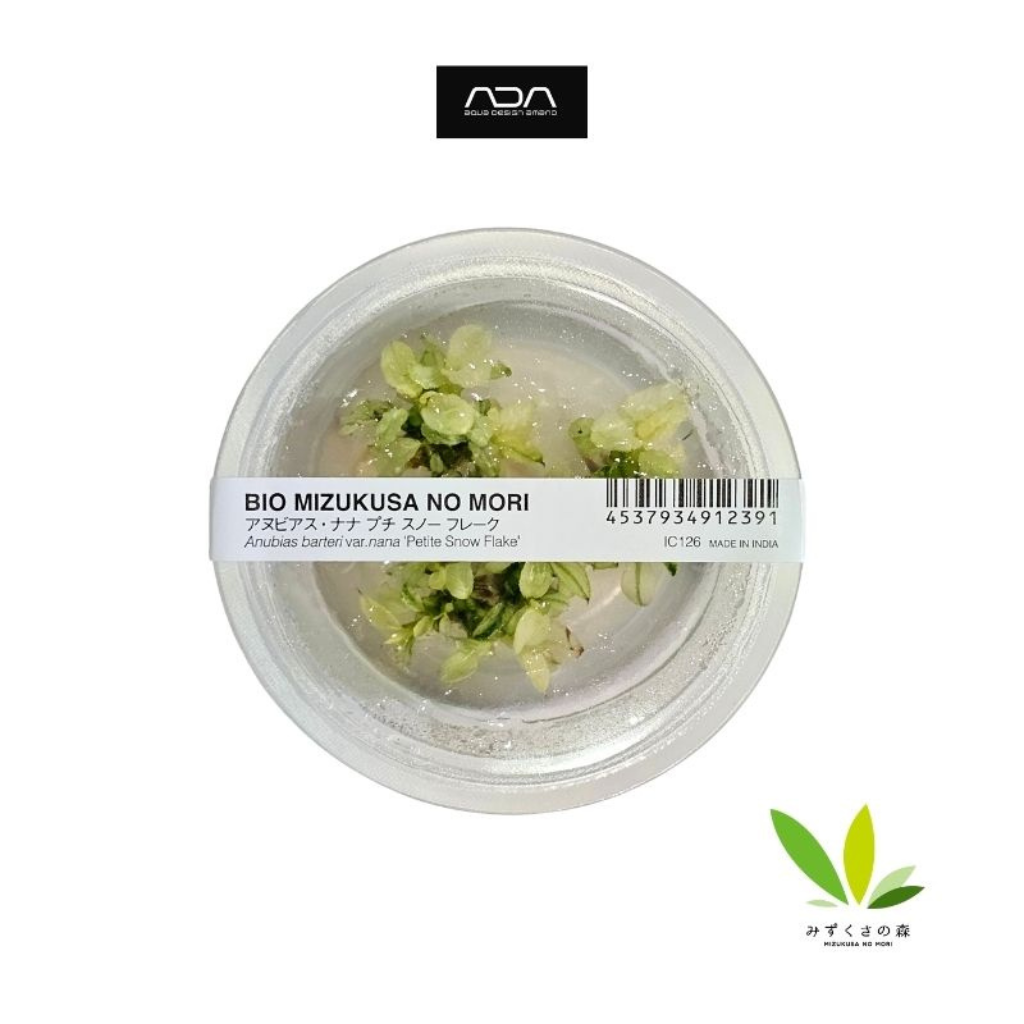

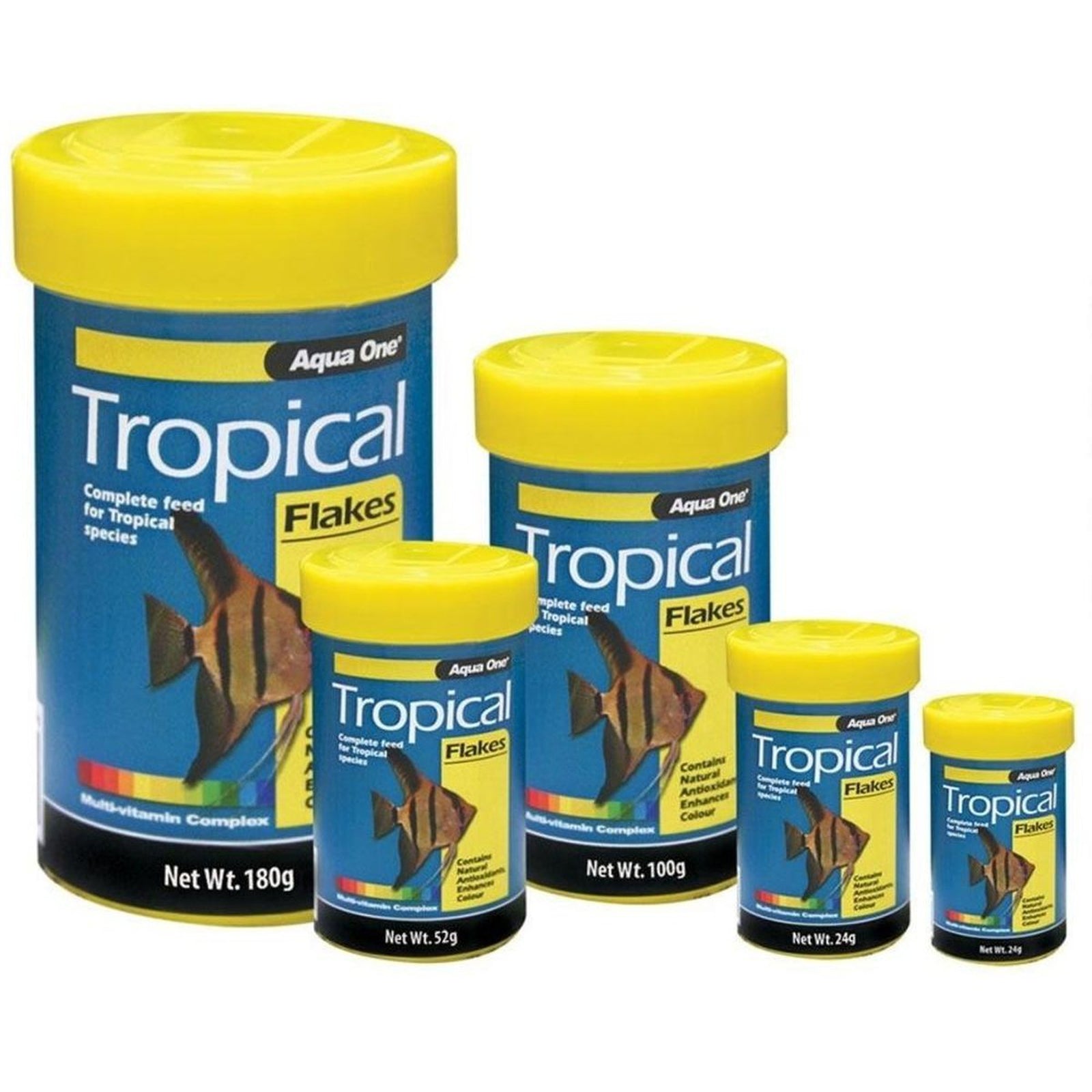
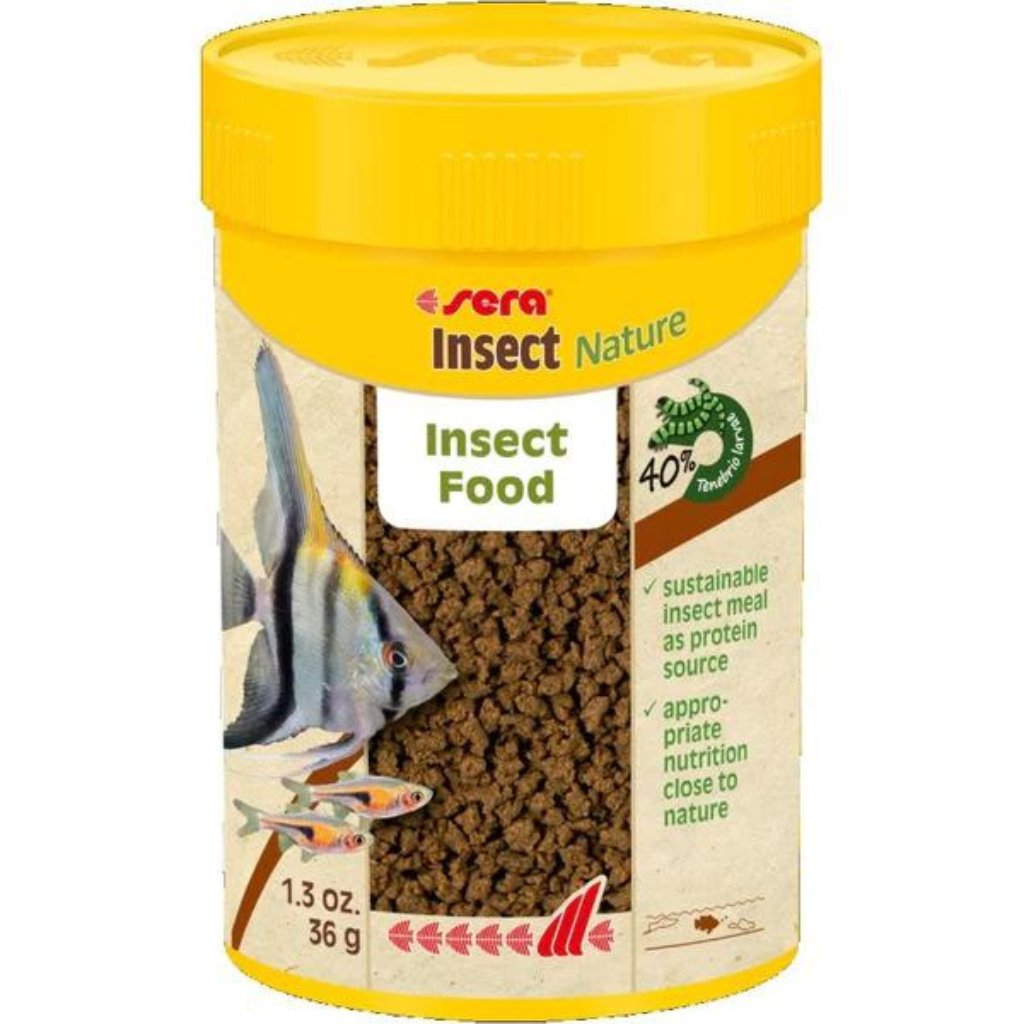
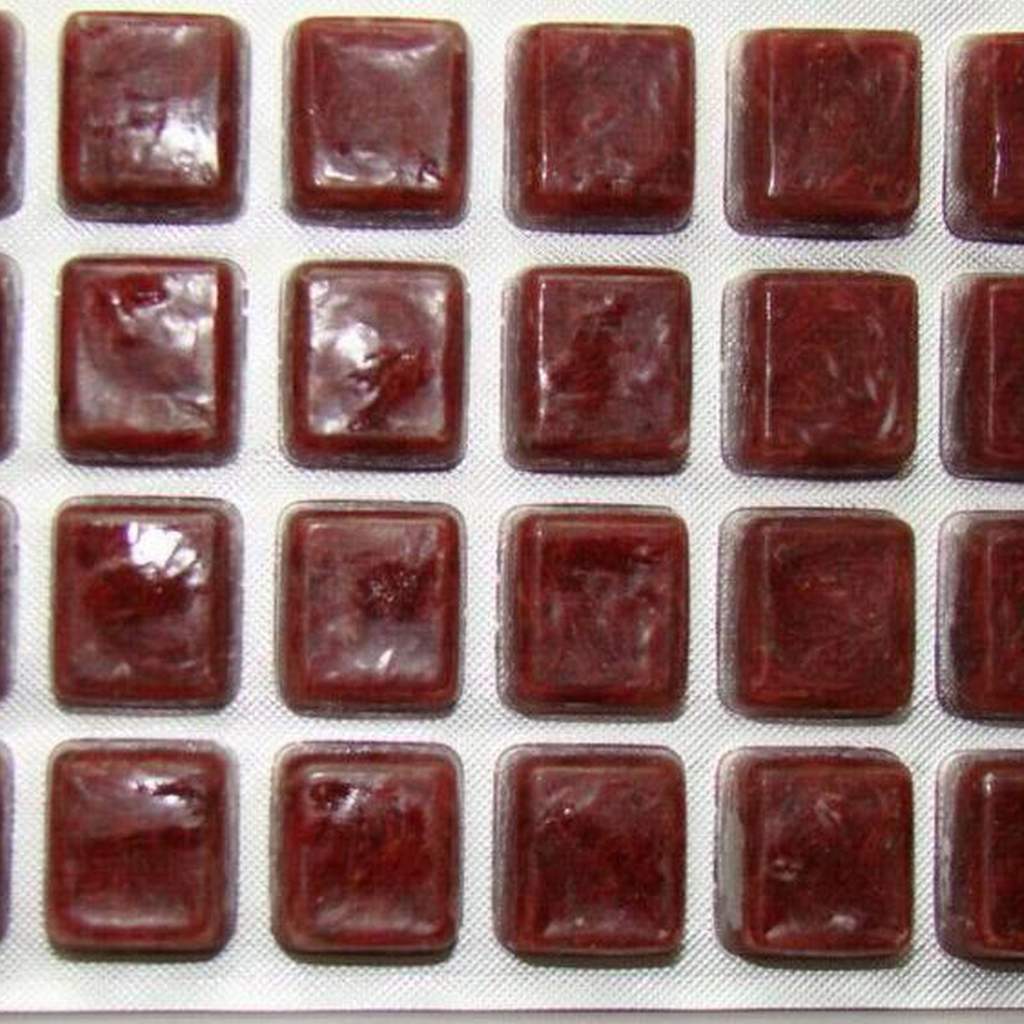
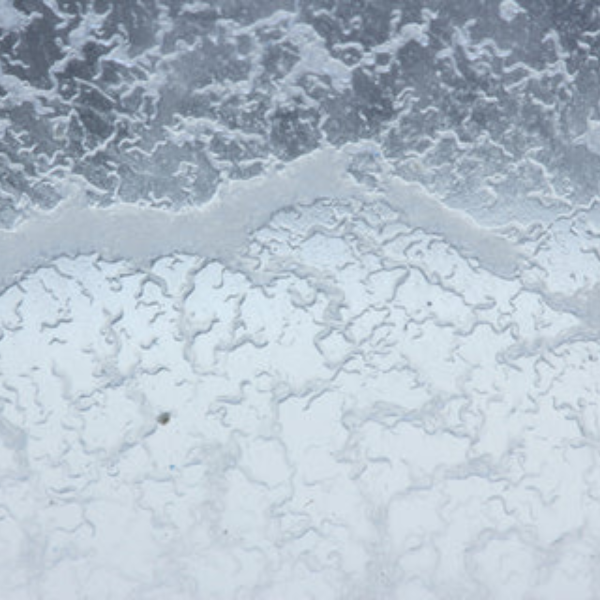




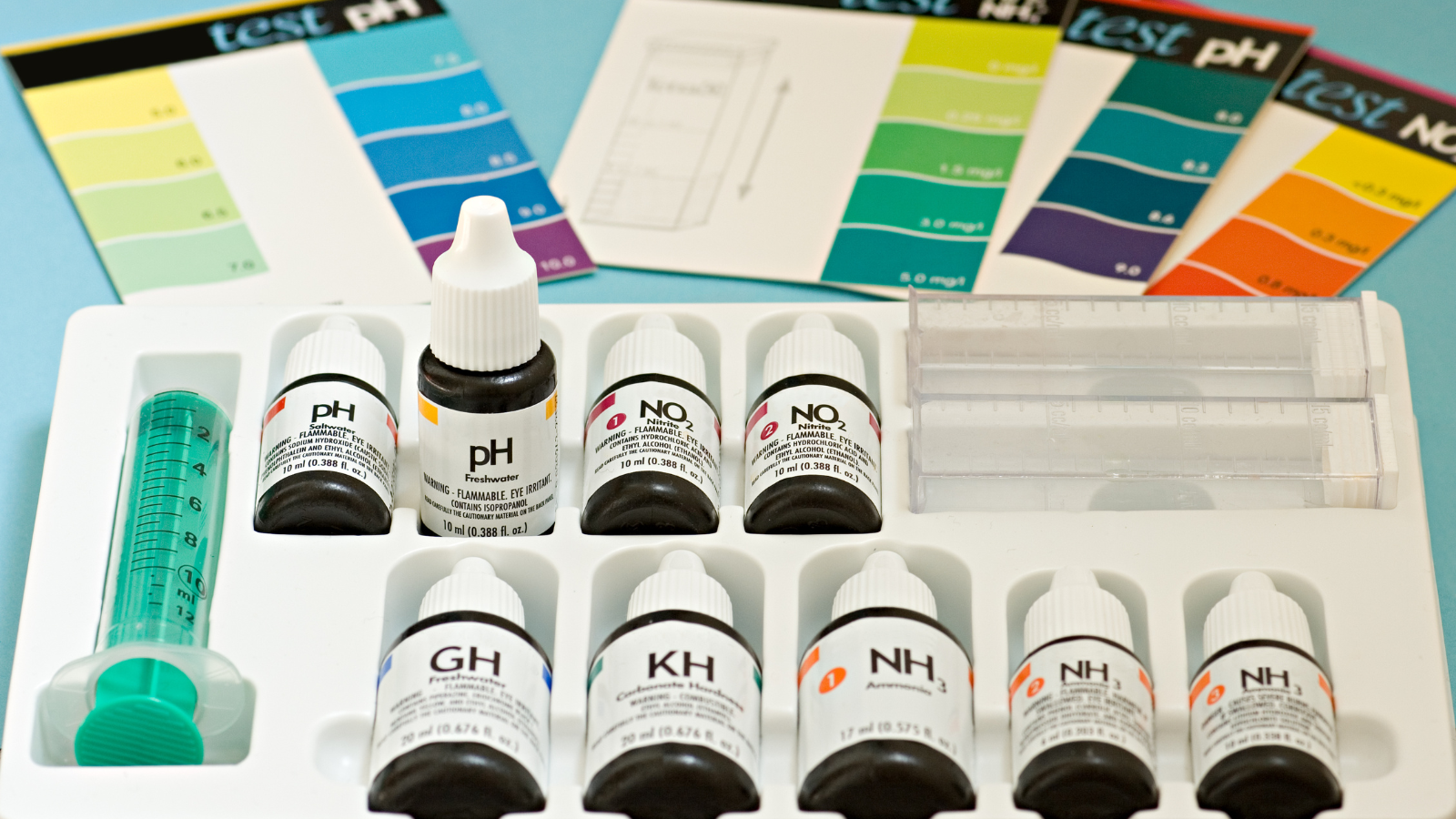
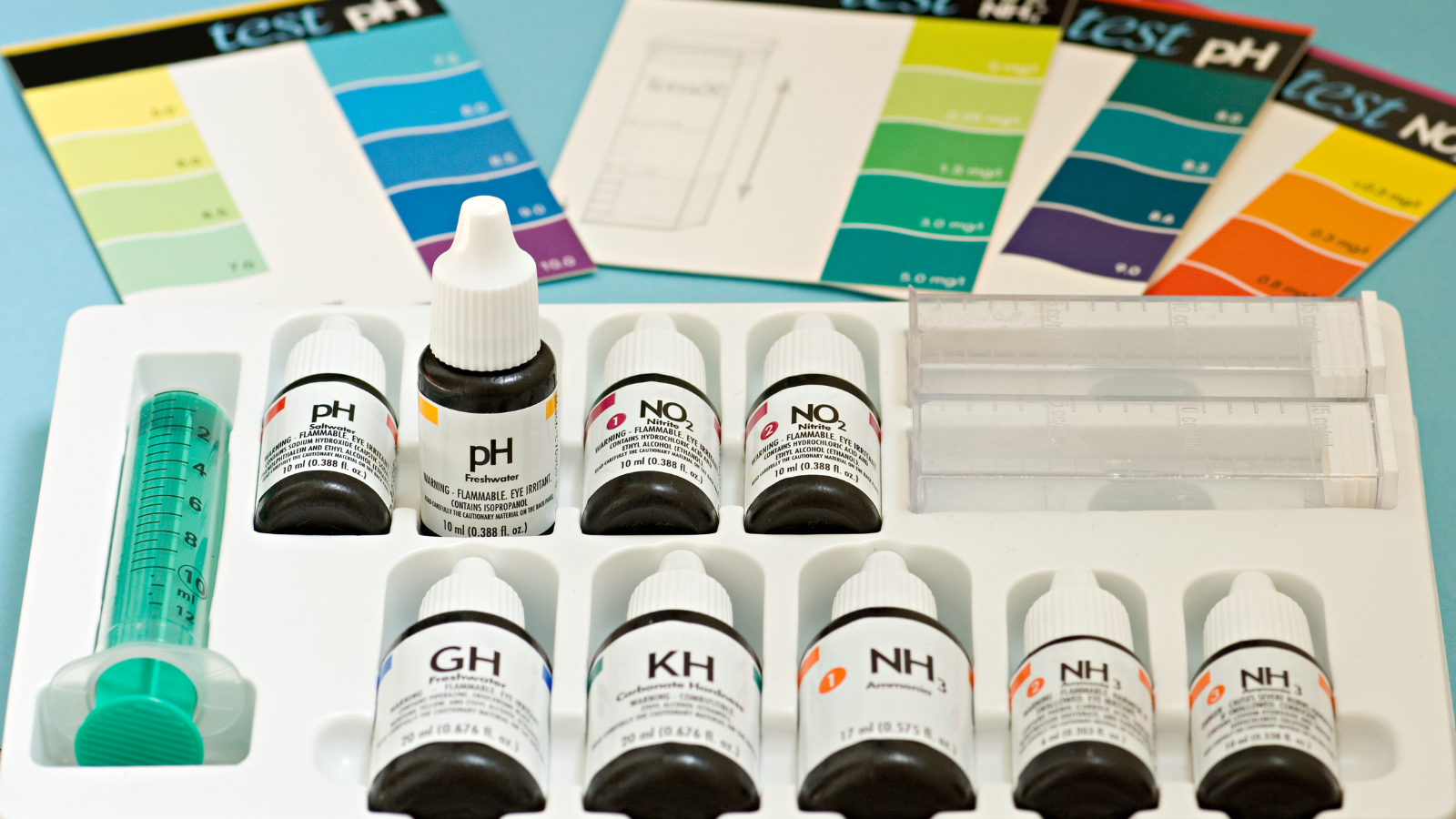
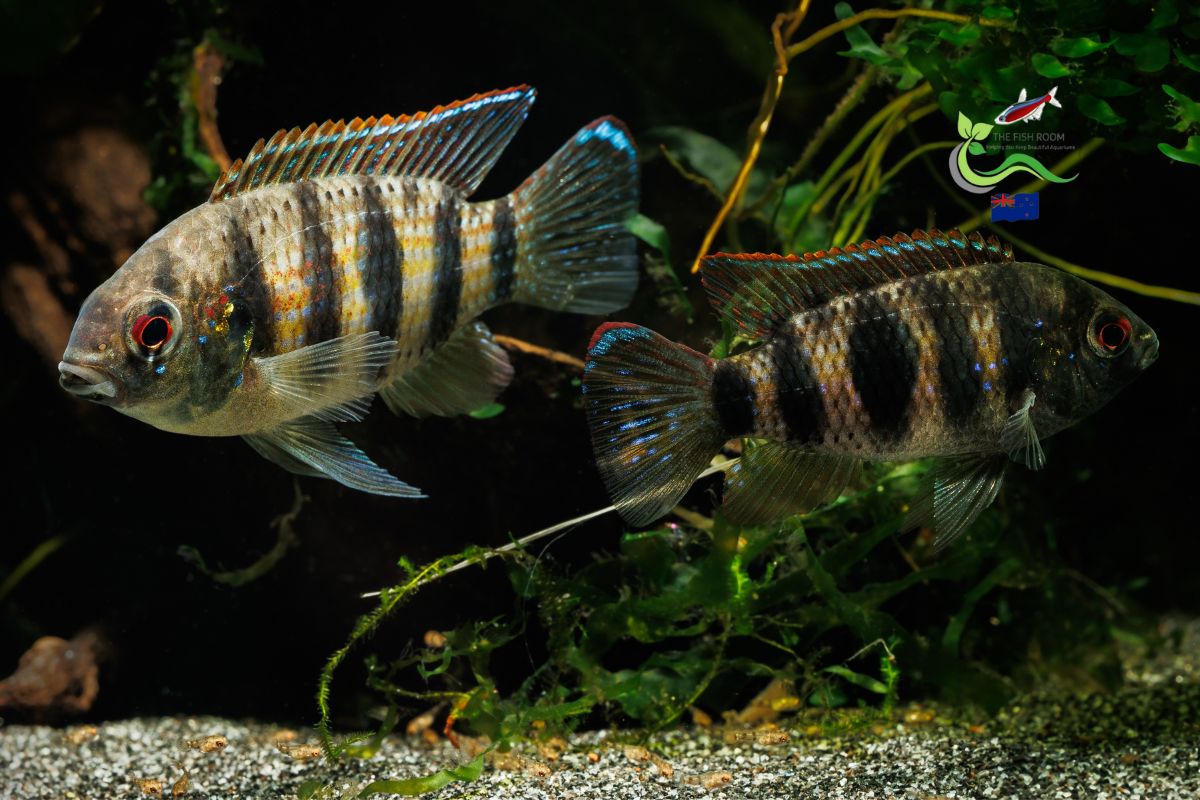
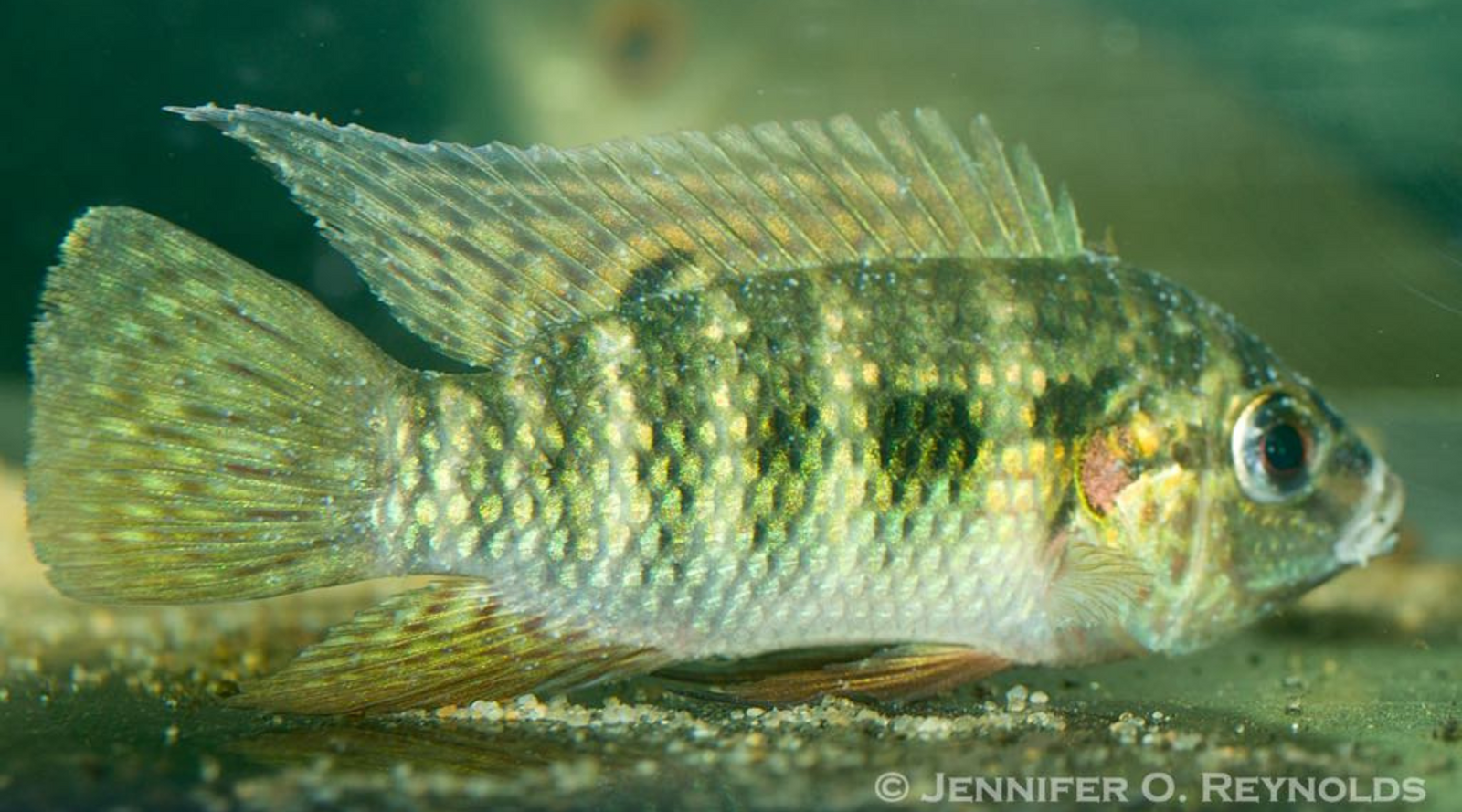
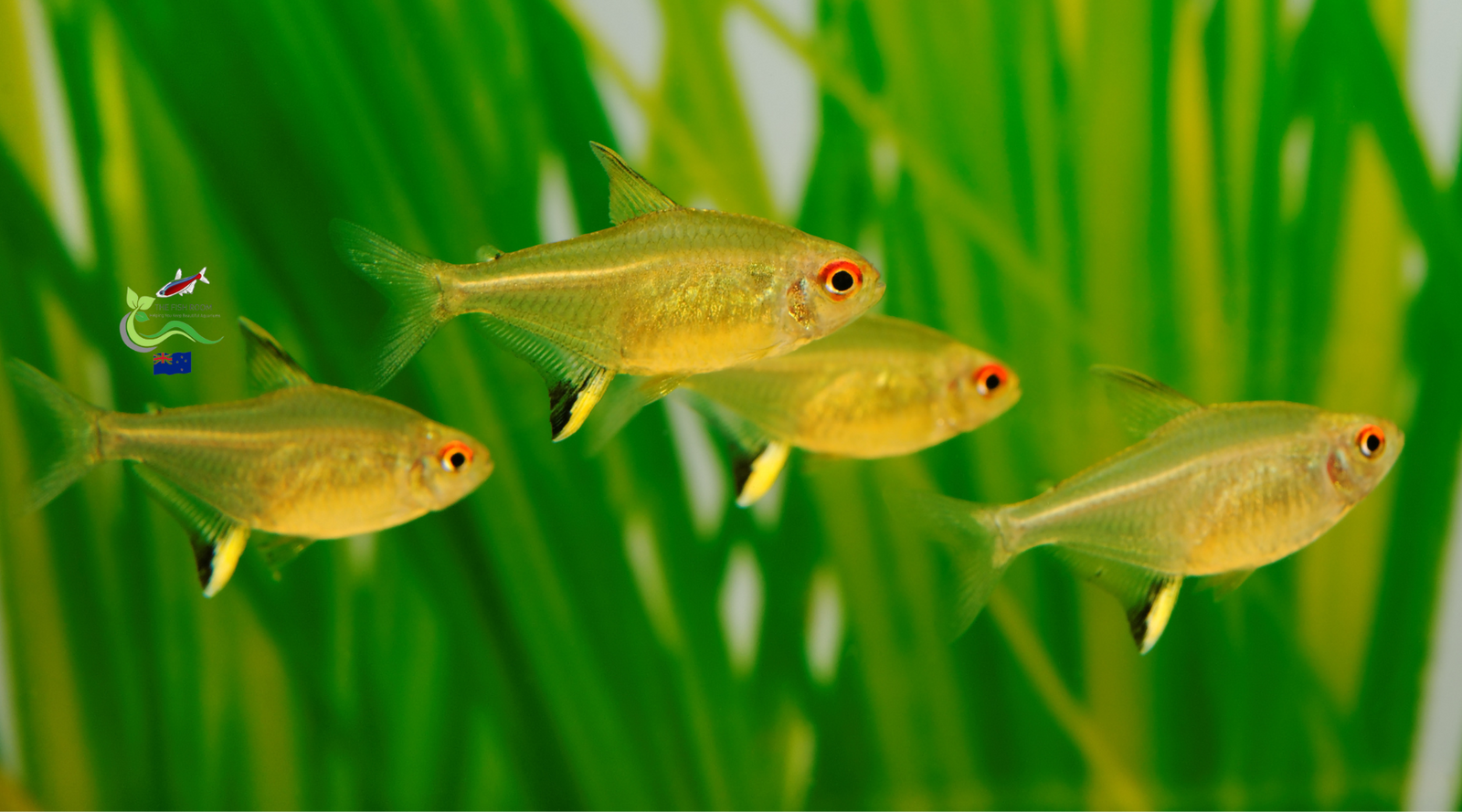
Leave a comment (all fields required)